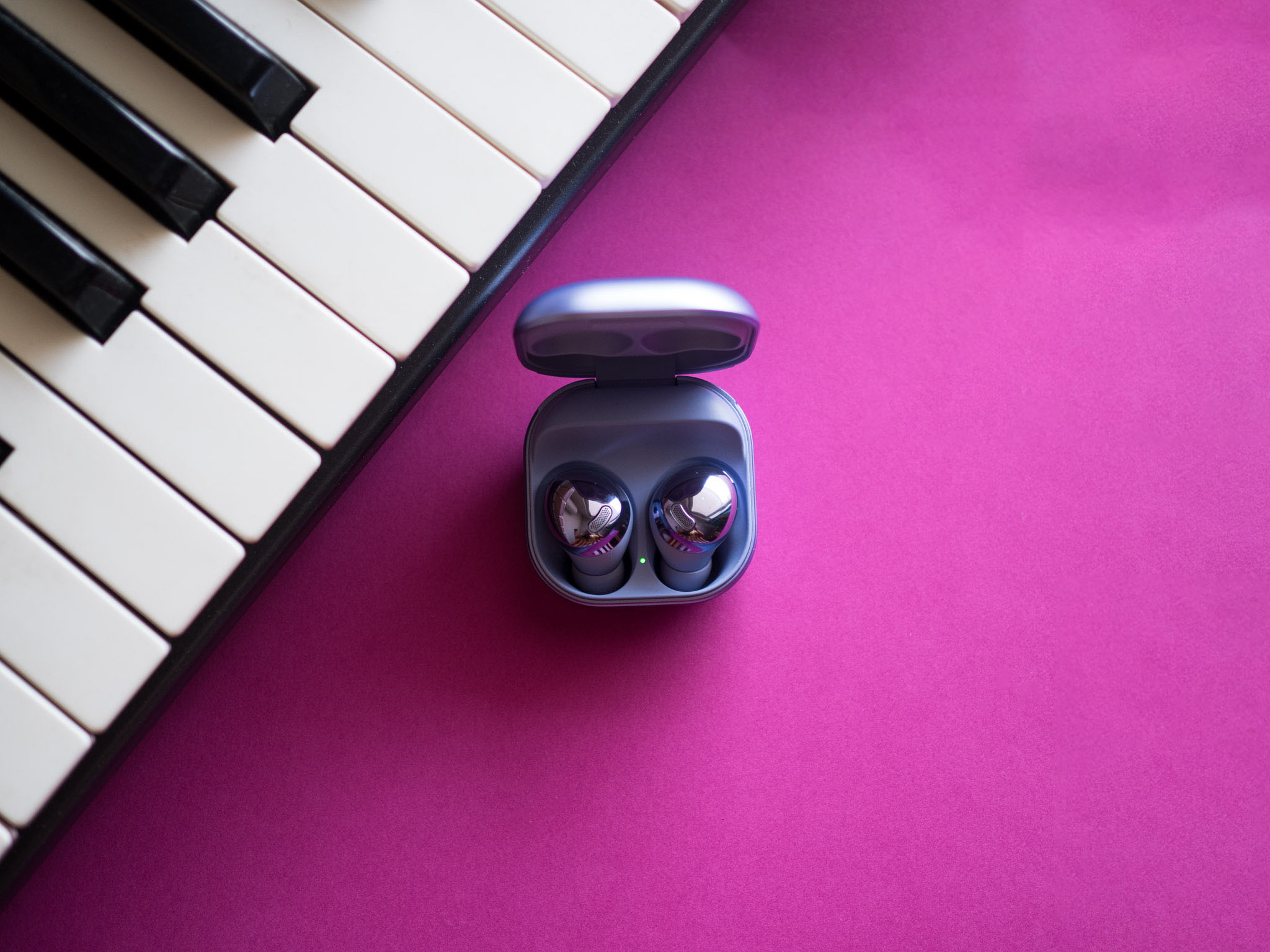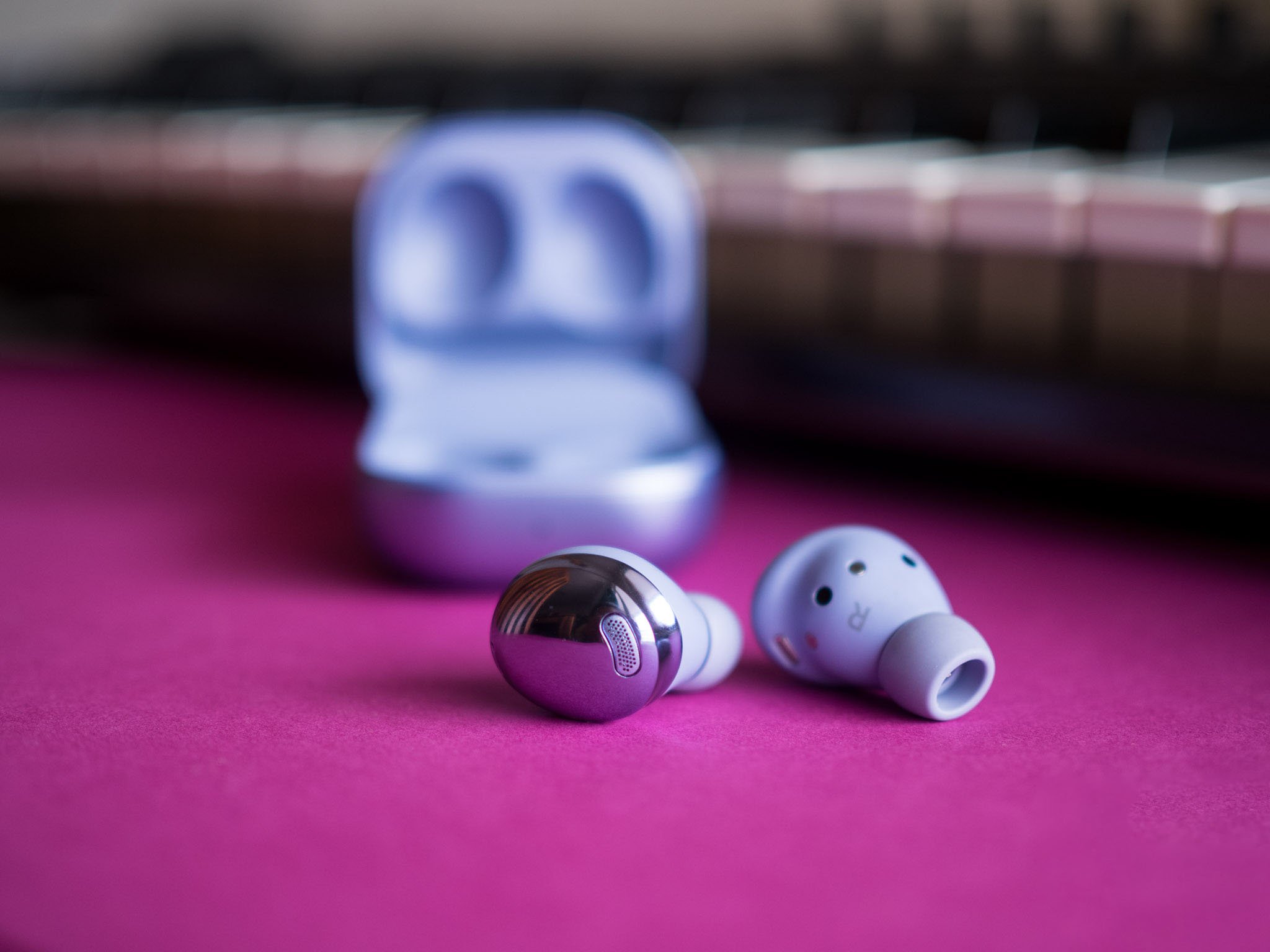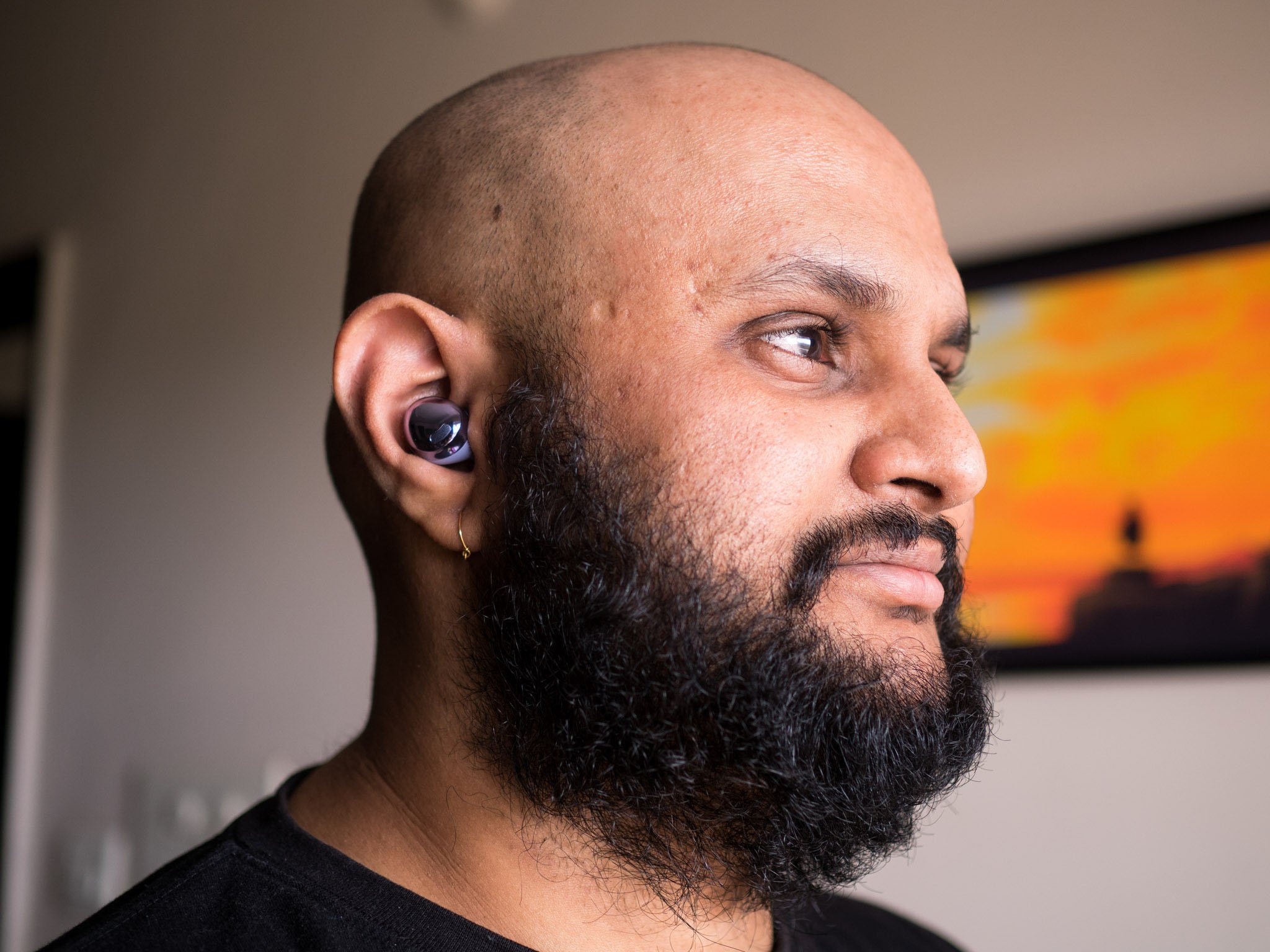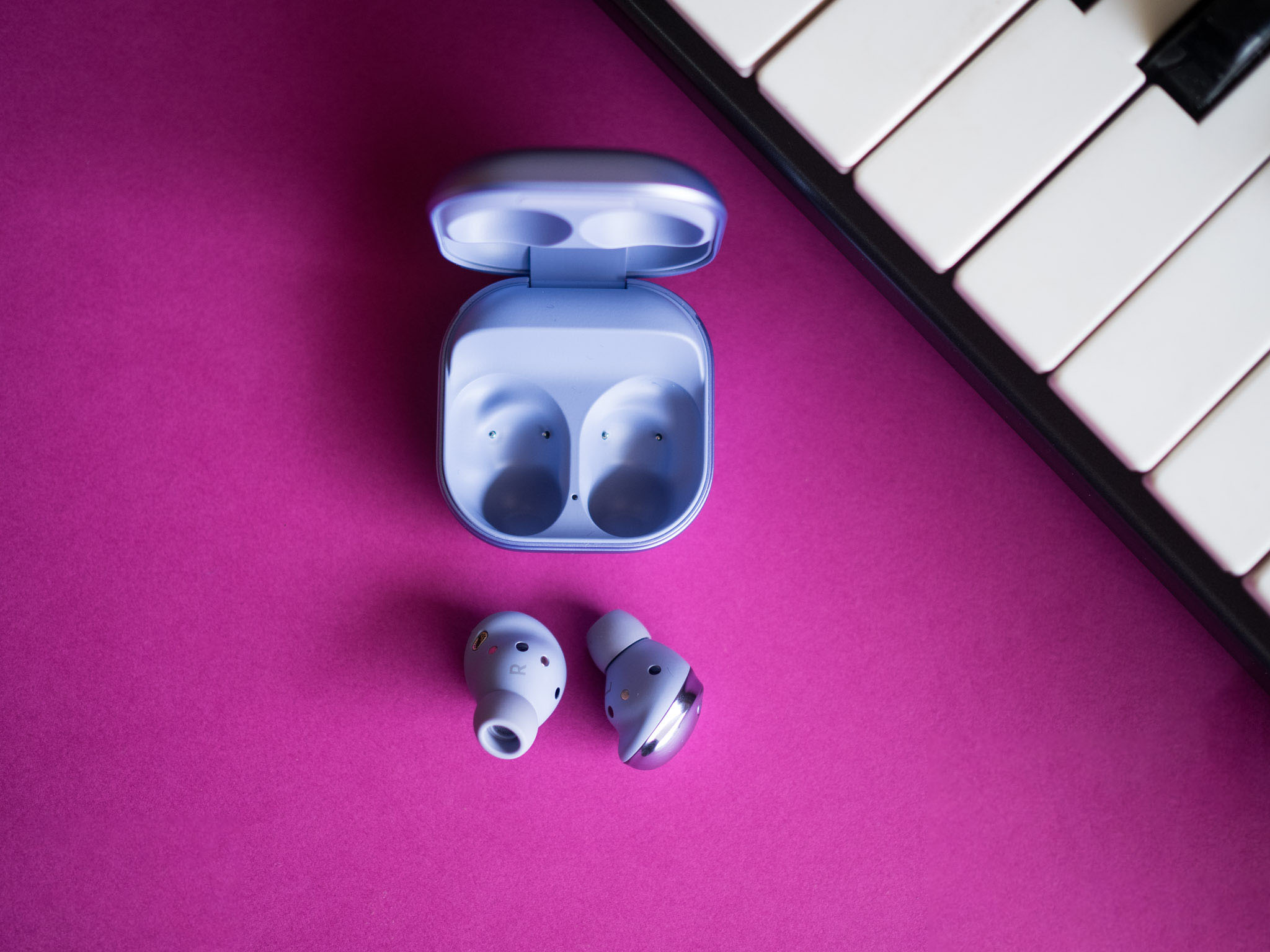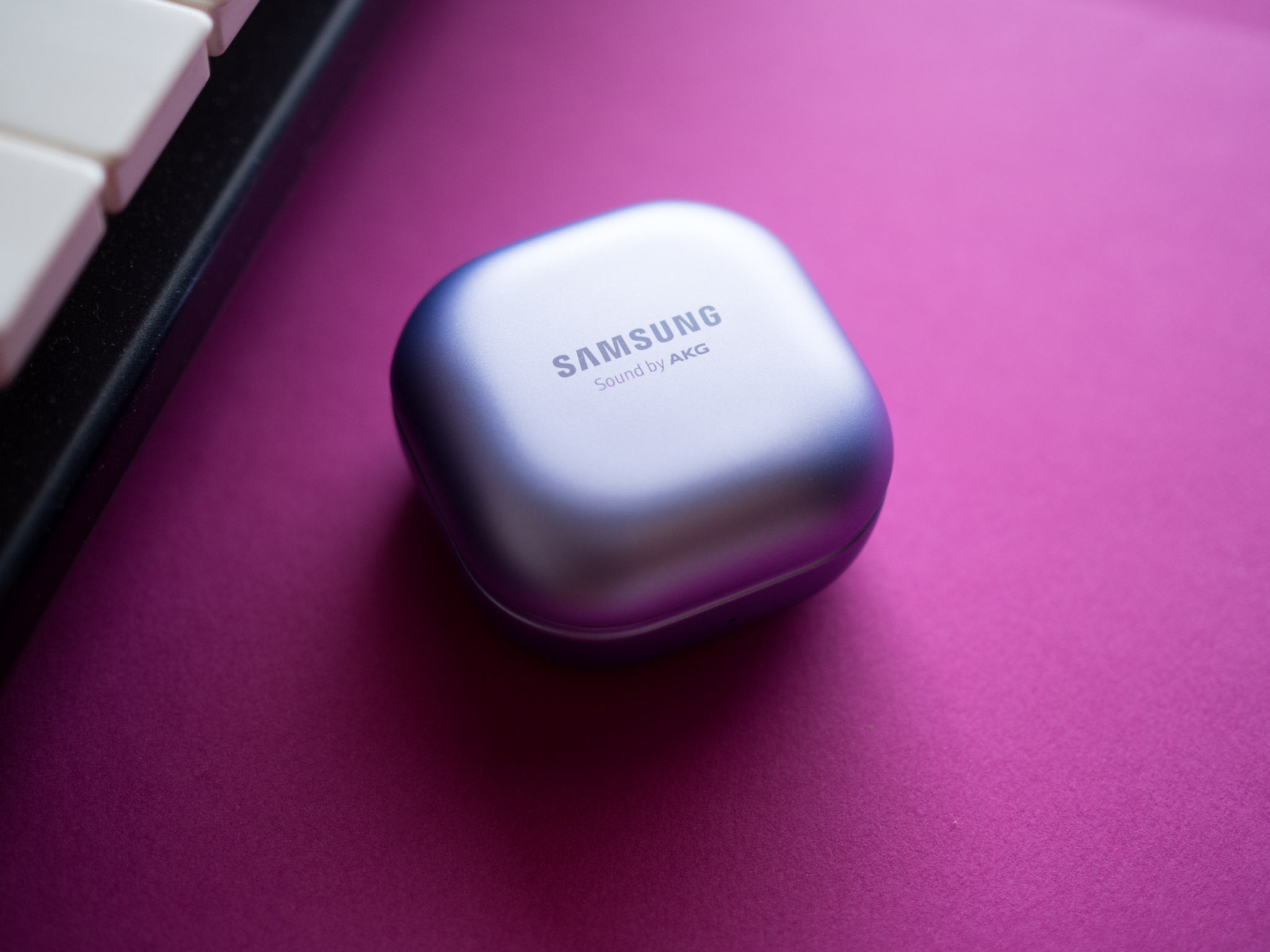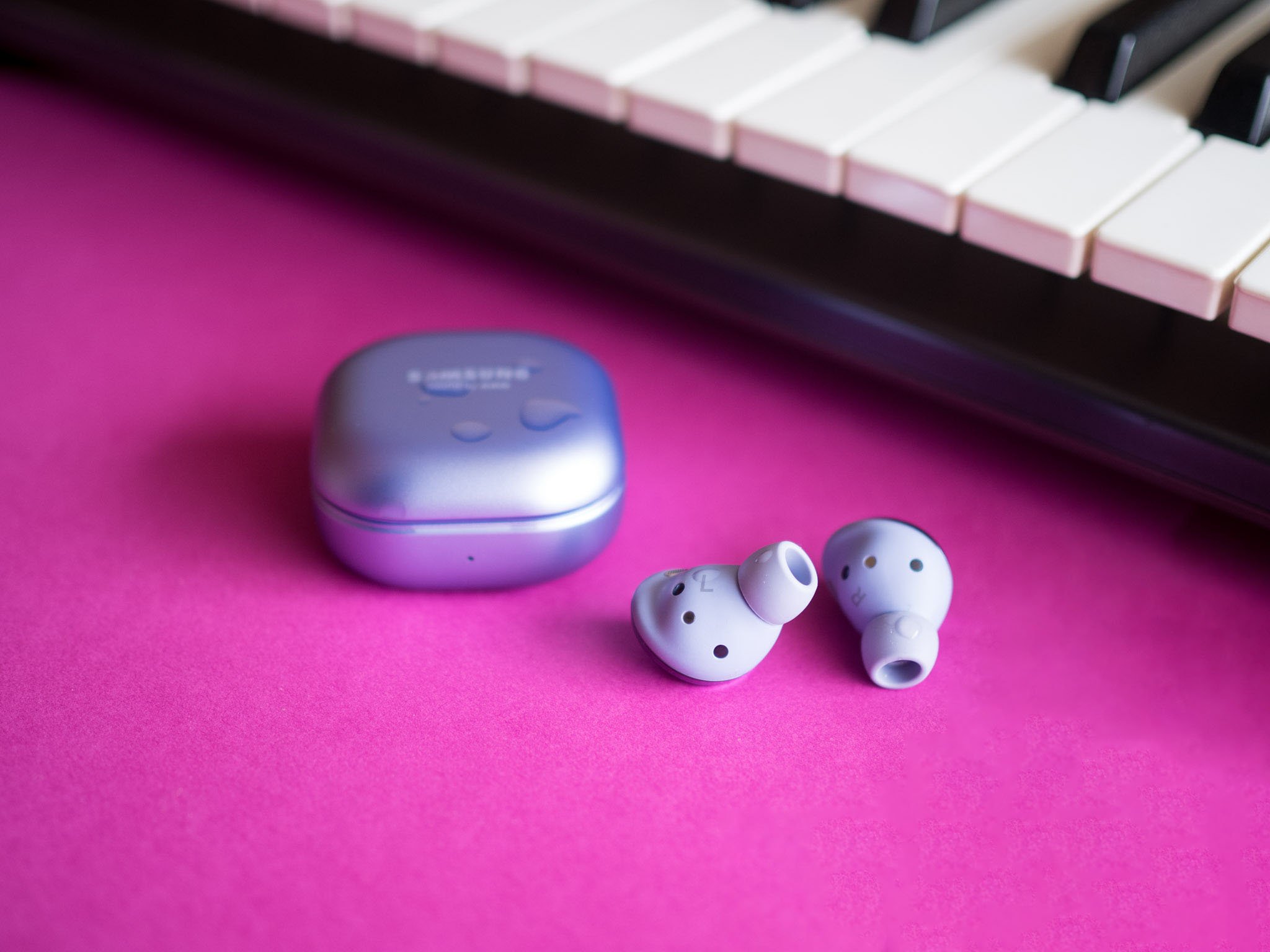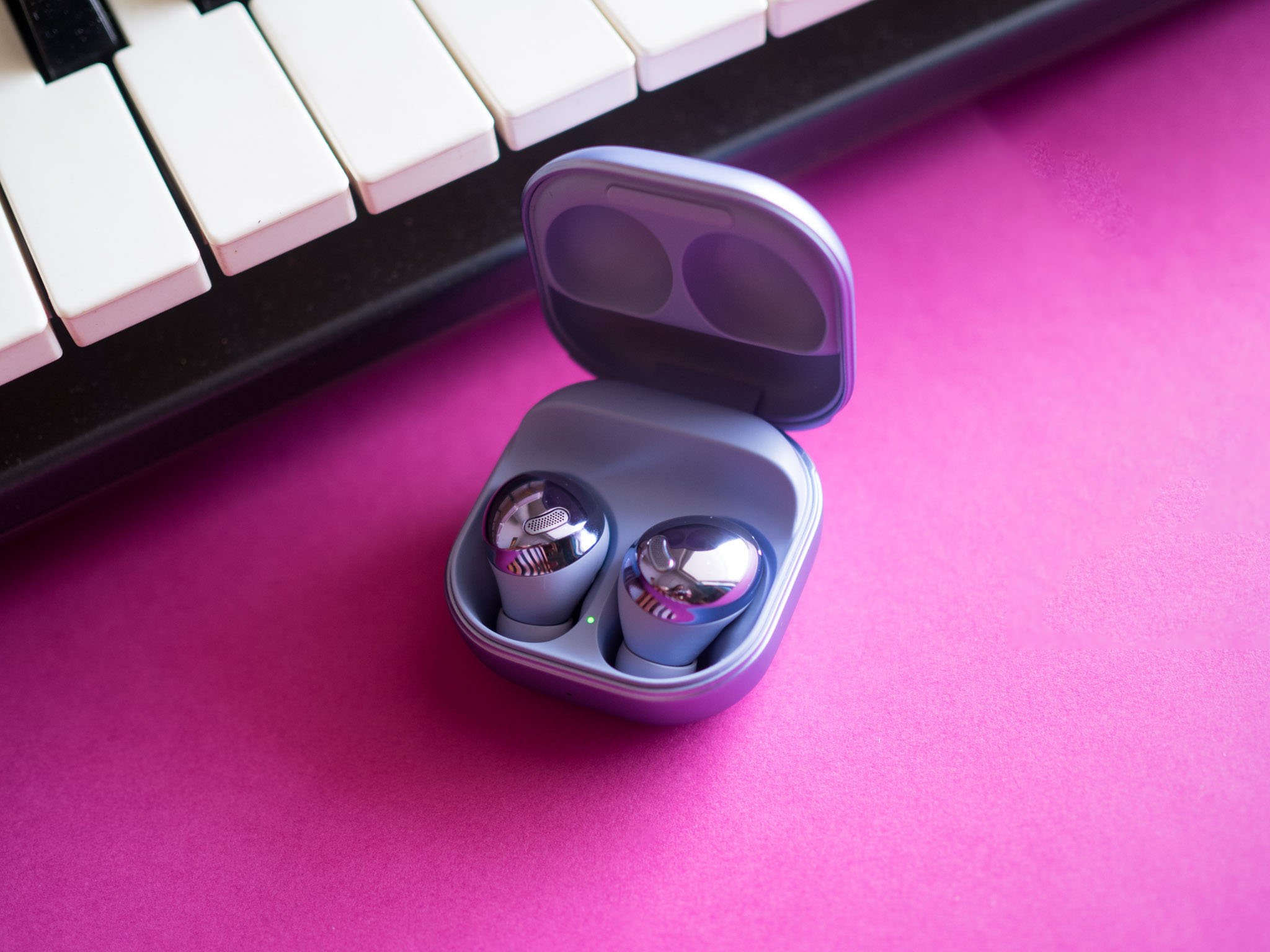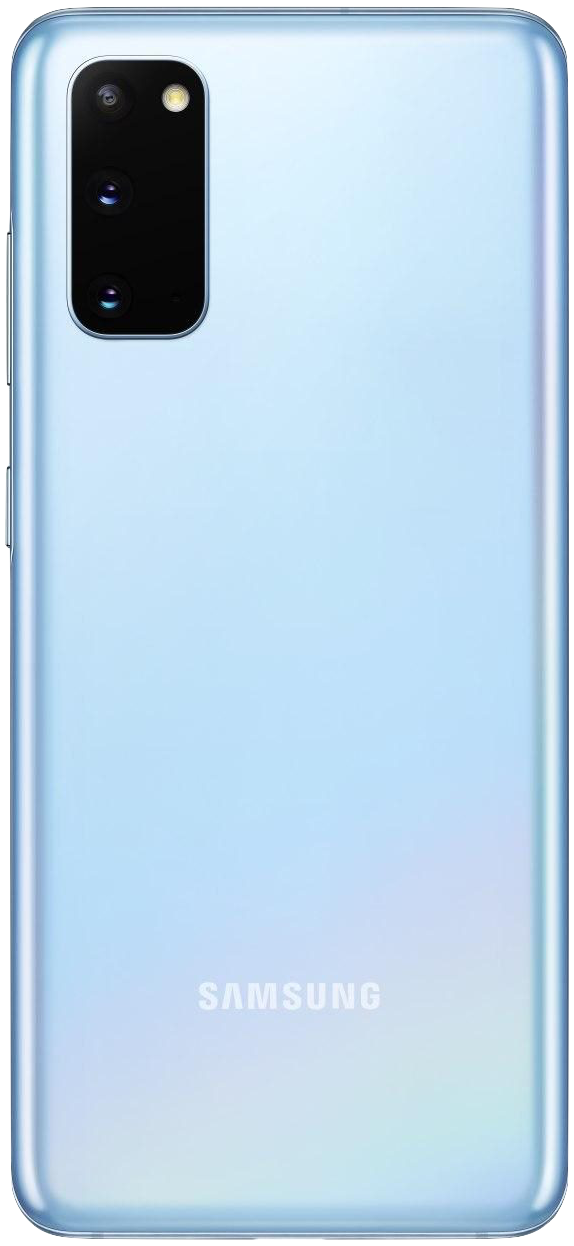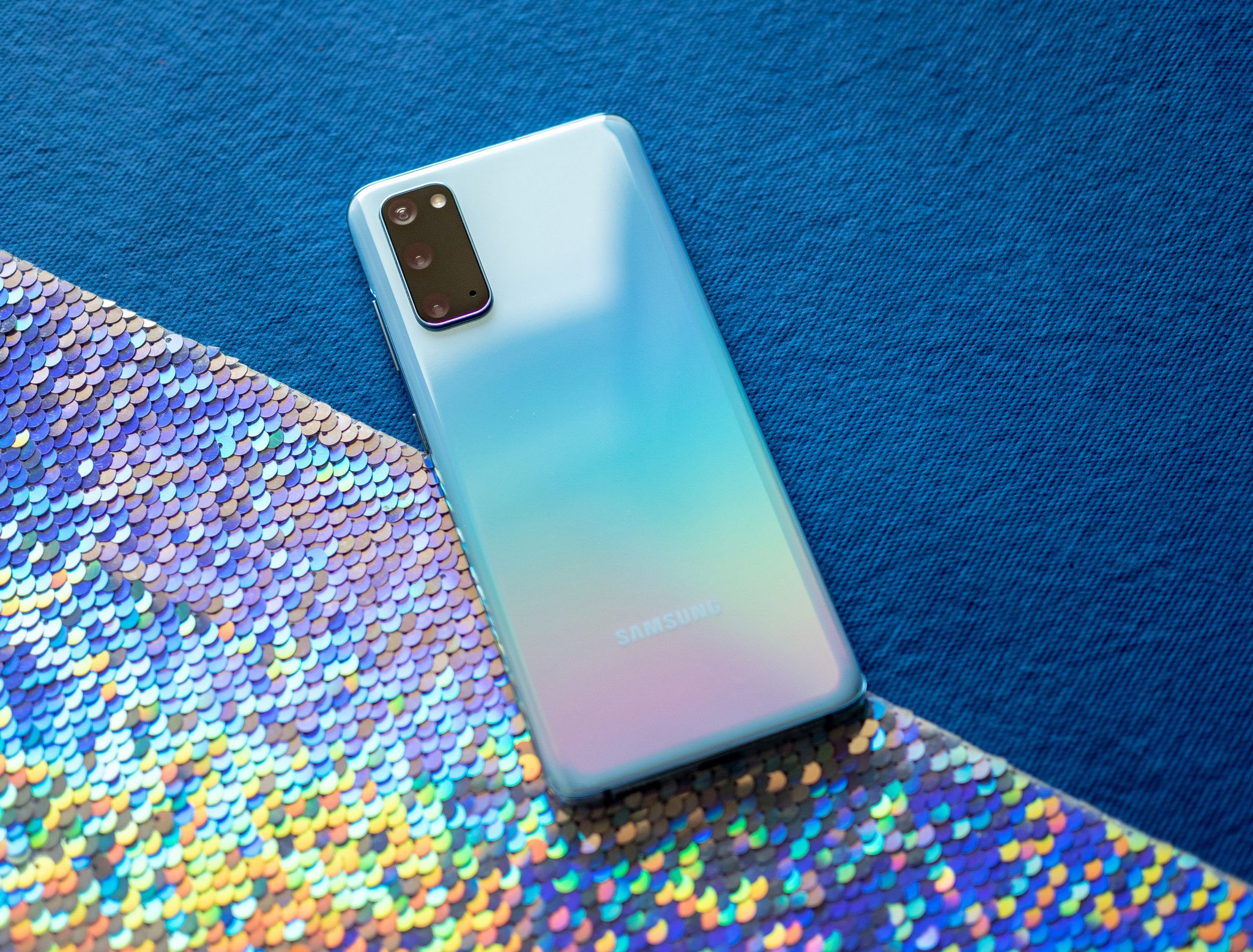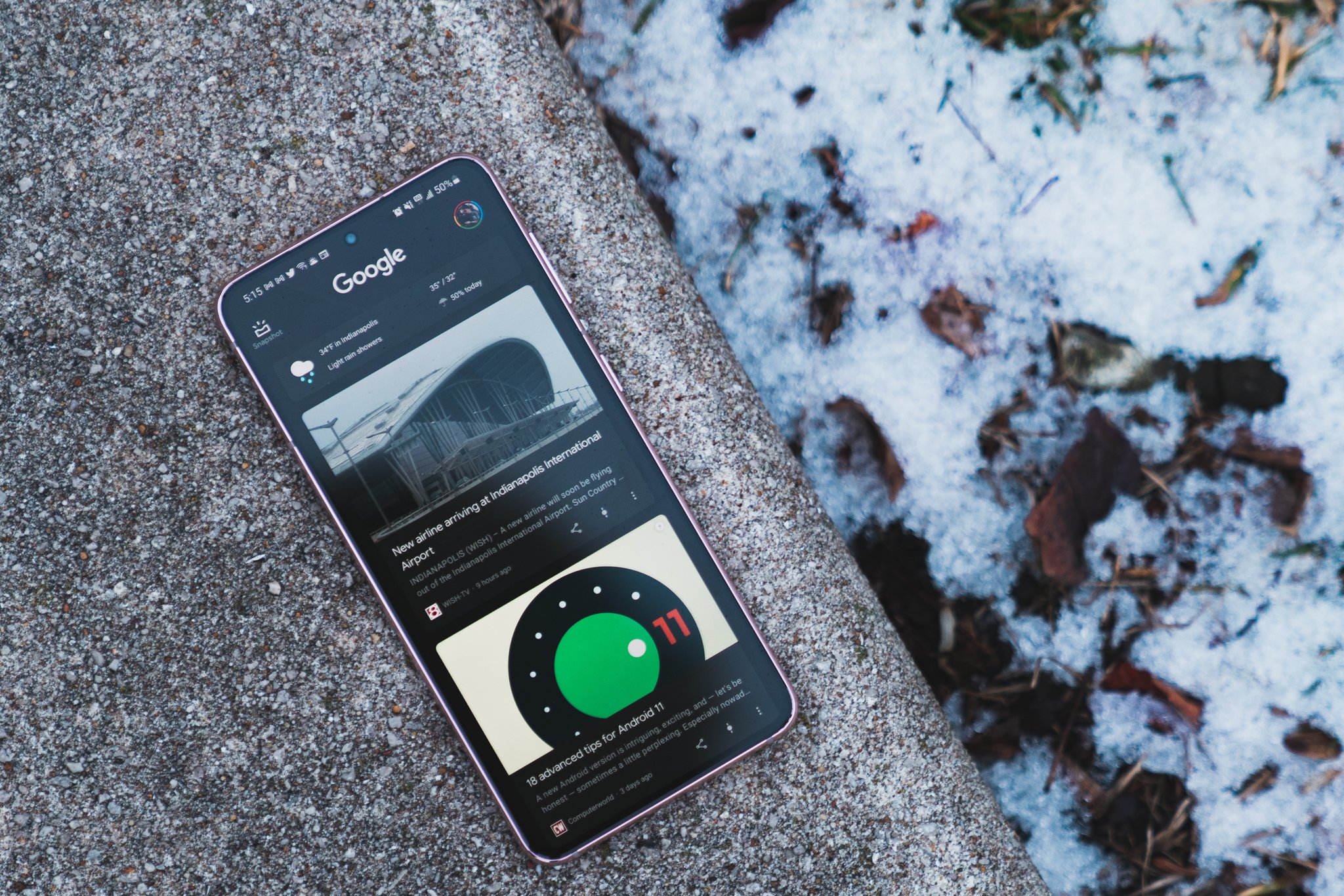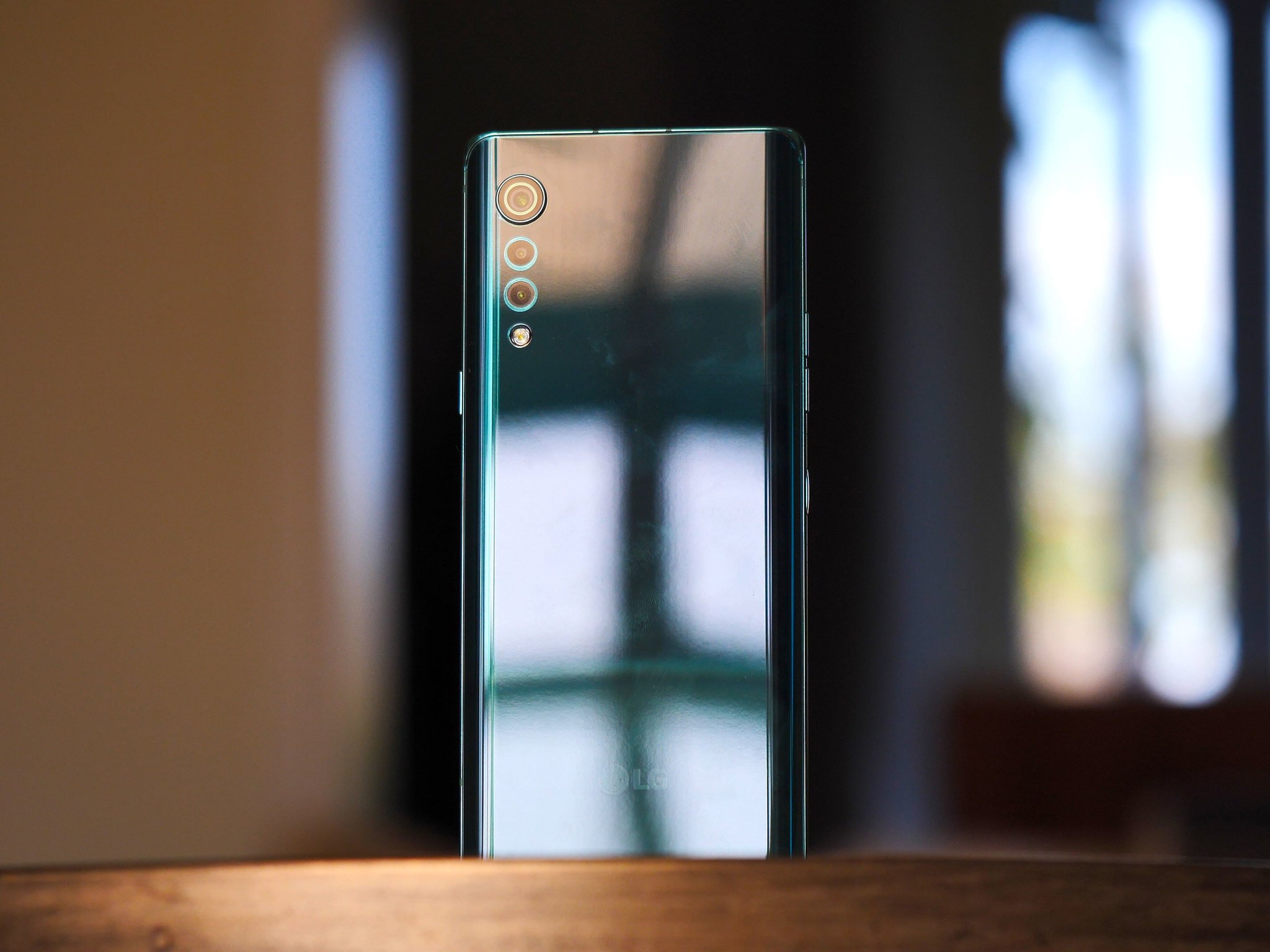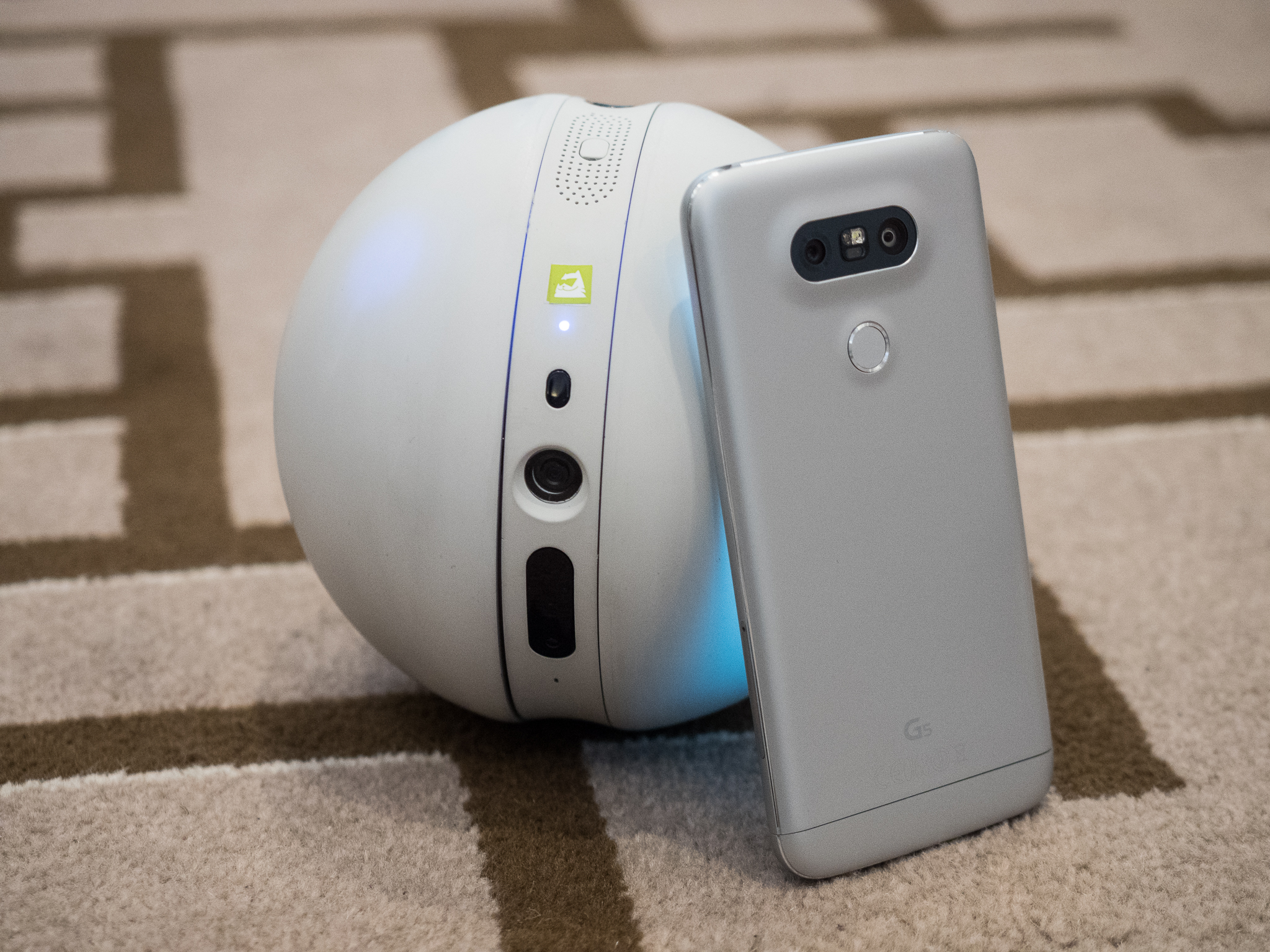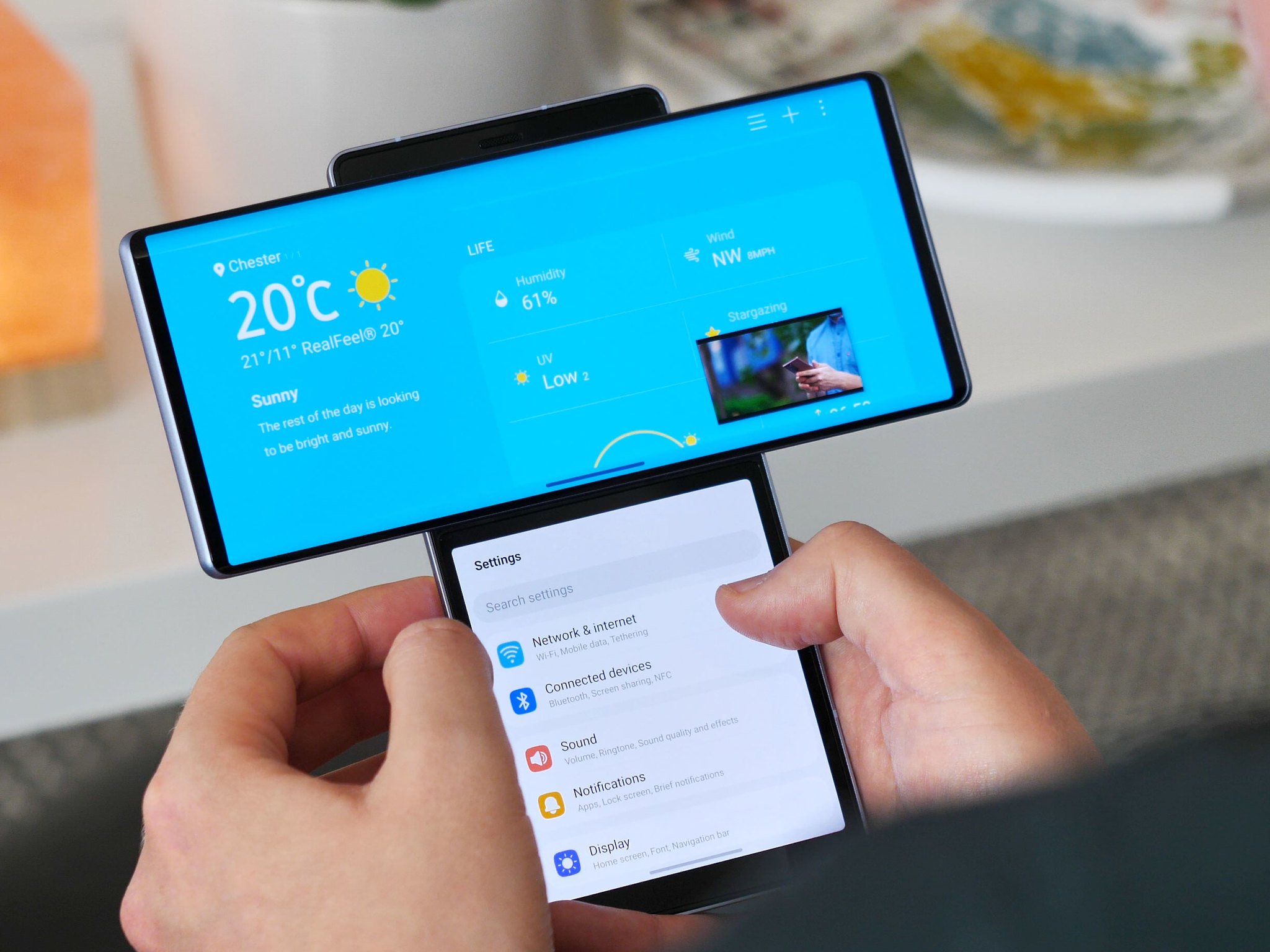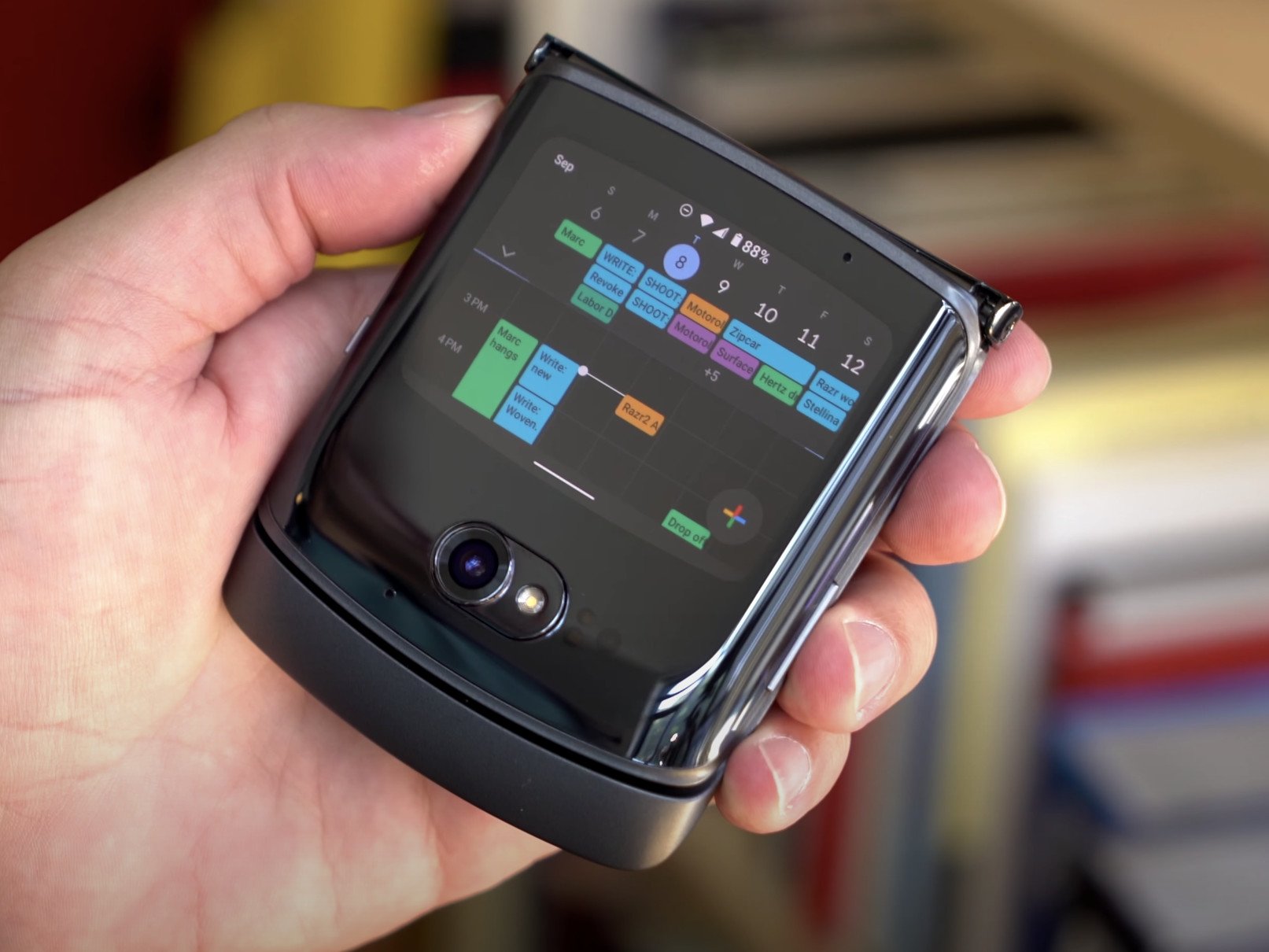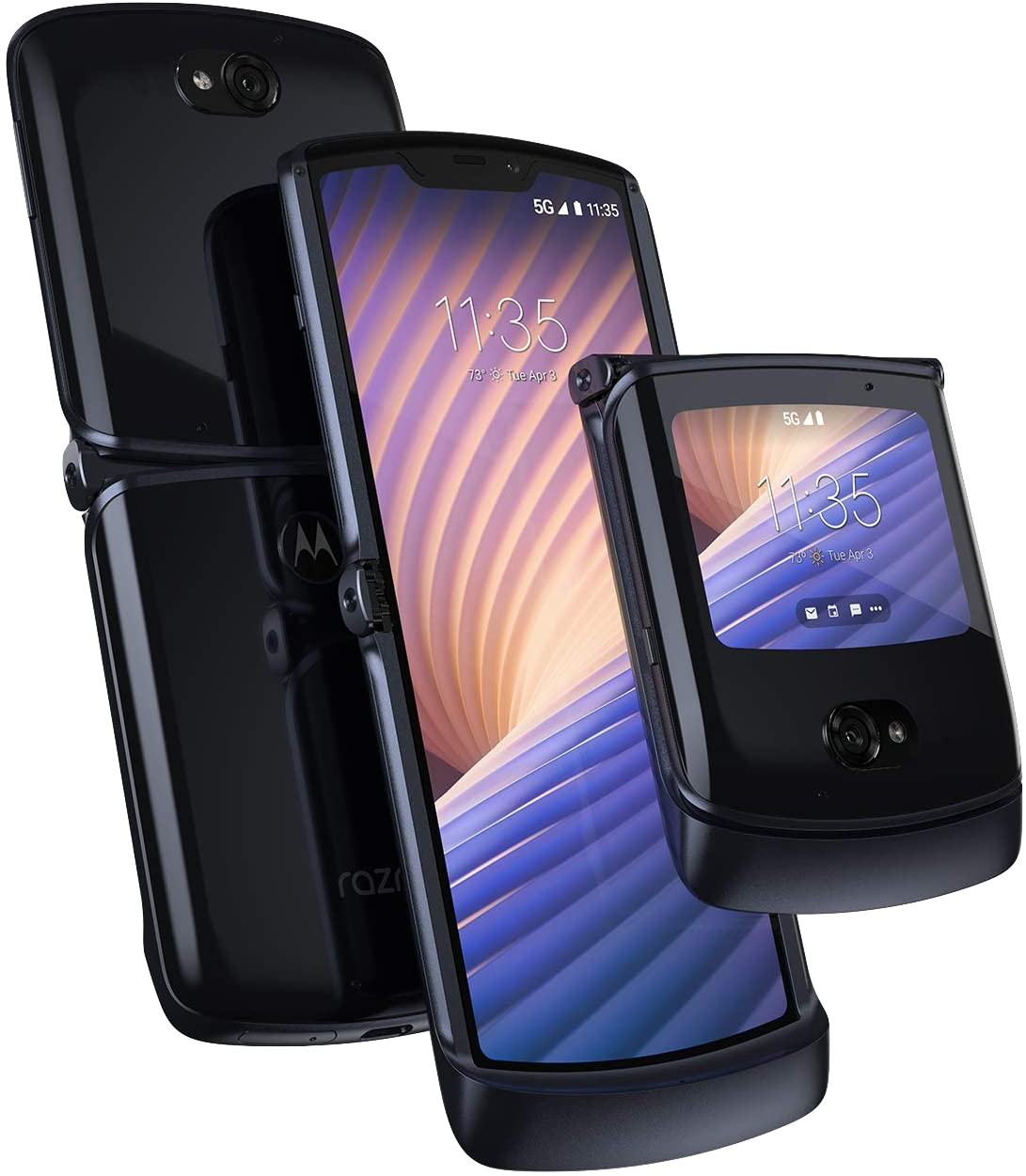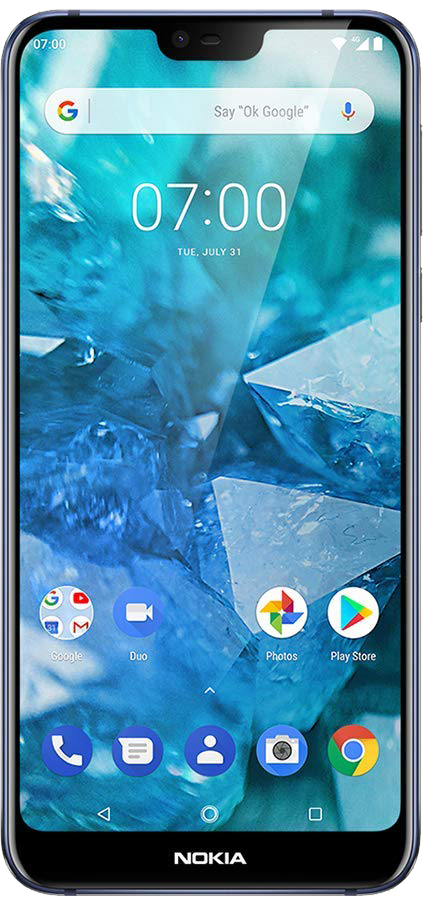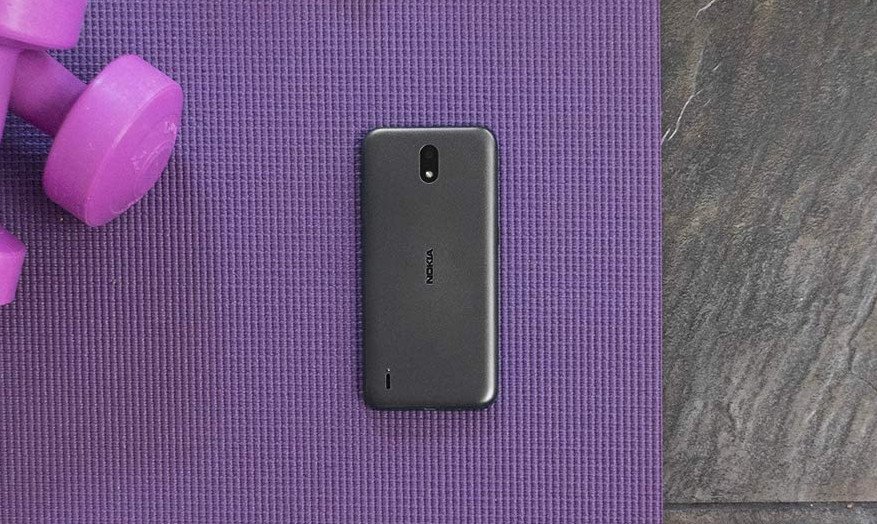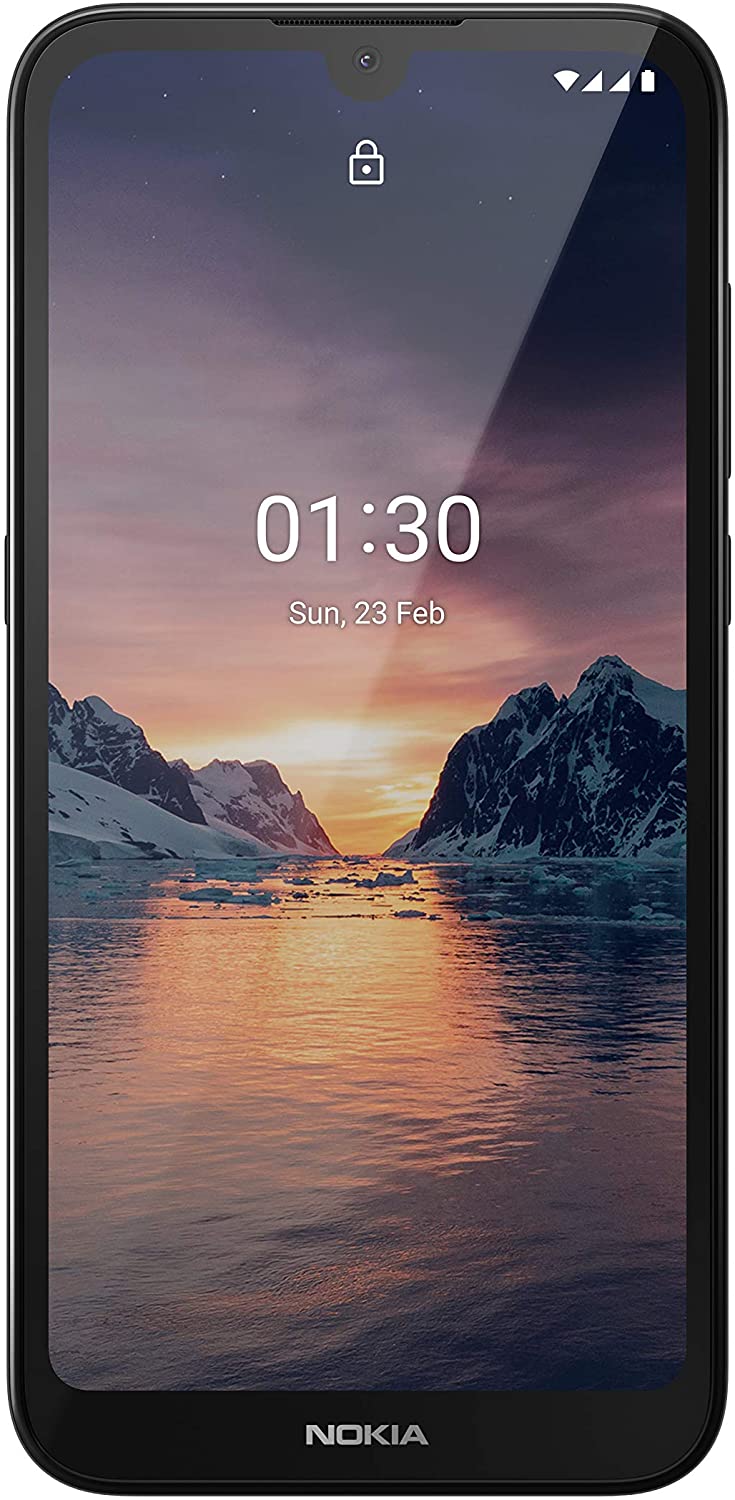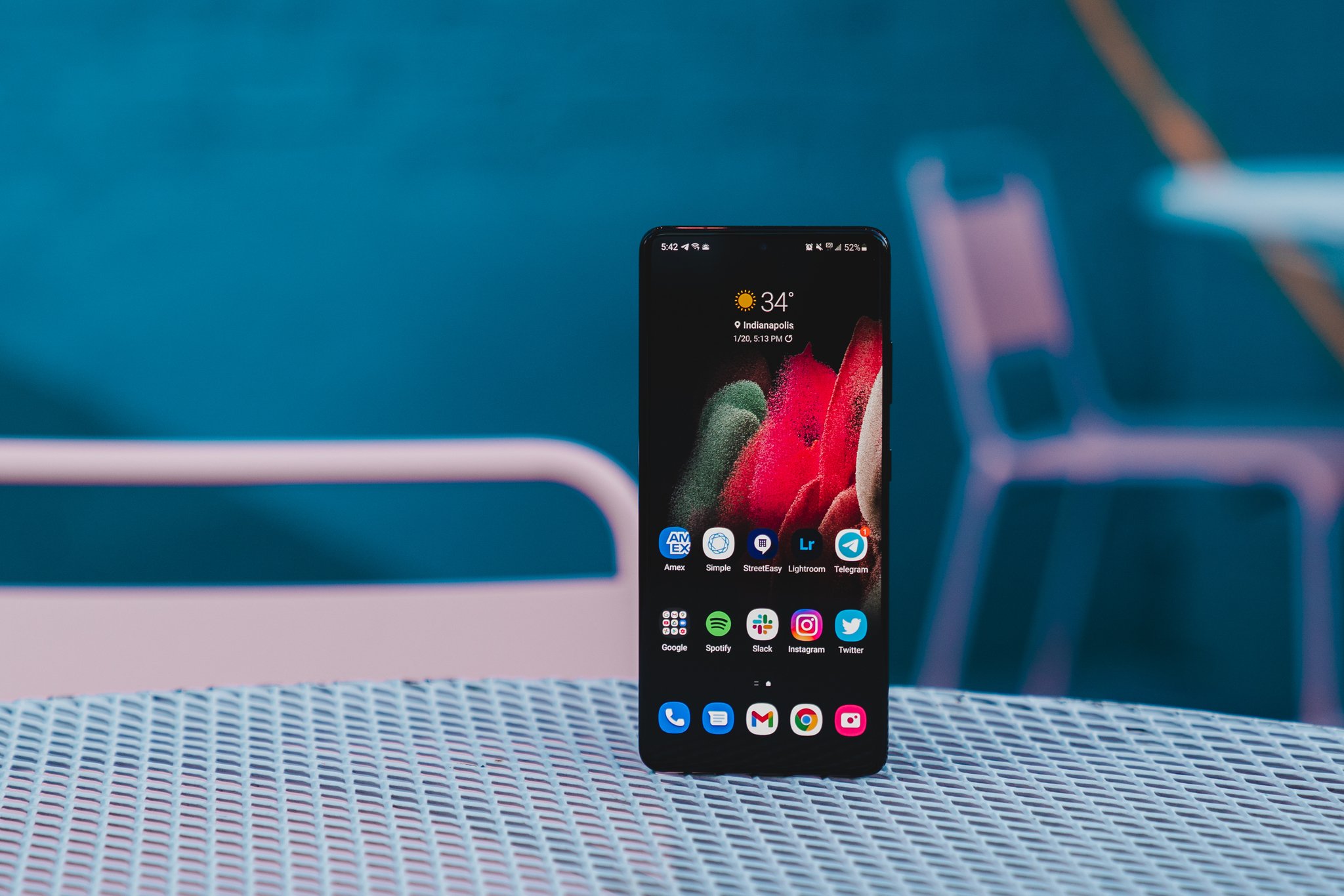
New technology works best when everyone commits to it, and in 2021, 5G has gone from marketing hype to a legit feature. In other words, you'll want to find the best 5G phones to future-proof yourself. A ton of support from carriers and smartphone companies is going to flood the market with 5G-capable phones this year. 5G isn't everywhere (yet), but if you live in a place with a 5G network, these are the best 5G phones you can buy, although the Galaxy S21 Ultra tops our list.
Best 5G Phone Overall: Samsung Galaxy S21 Ultra
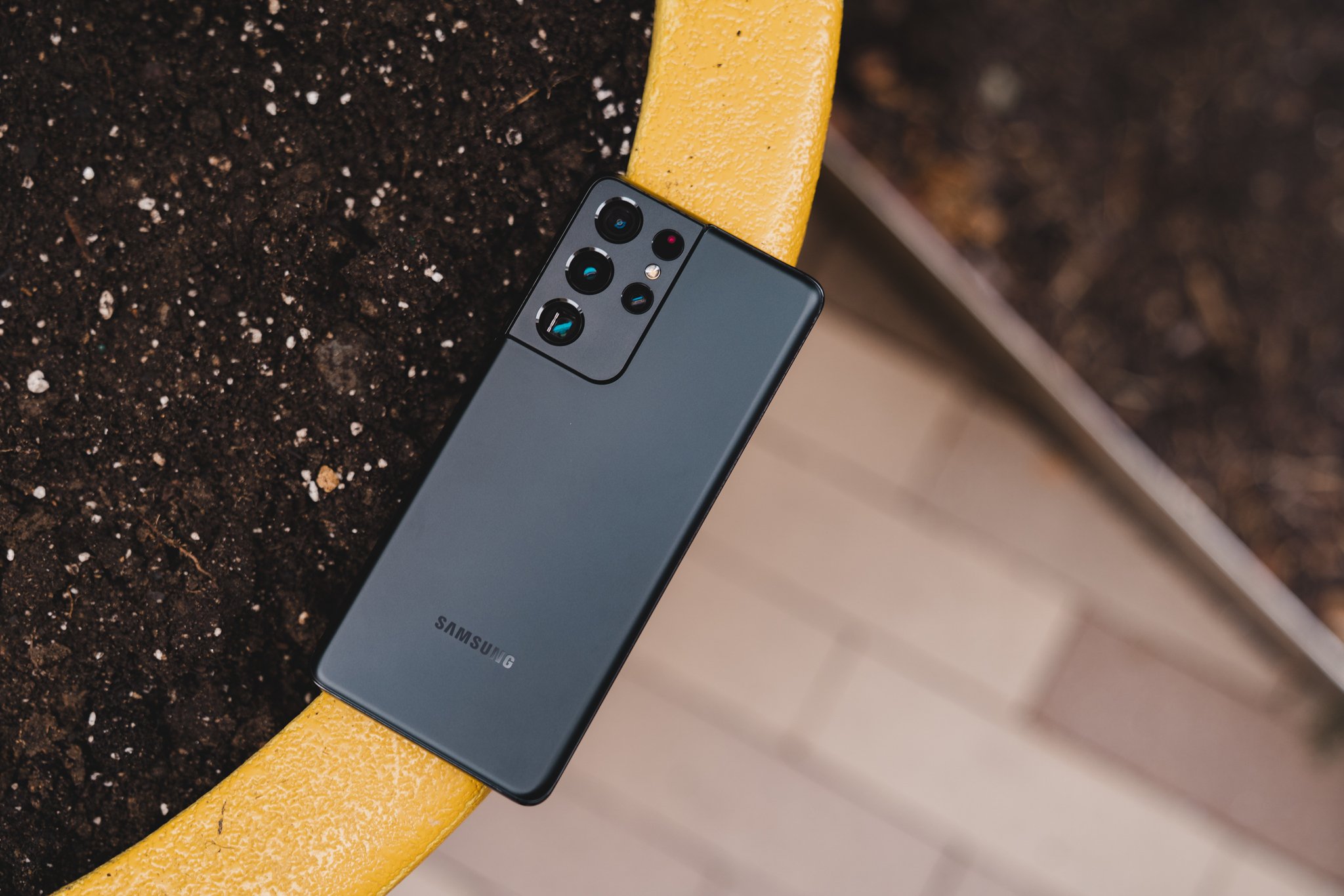
The Galaxy S21 Ultra is the first proper flagship of 2021, and looking ahead, it'll be mighty hard for any company to dethrone the S21 Ultra as one of the best Android phones of the entire year.
Samsung got so much right with this thing, and it all starts with the display. The S21 Ultra is packing a massive 6.8-inch Dynamic AMOLED panel that can hit a max resolution of 3200x1440. Unlike last year's S20 Ultra, you can run the display in that Quad HD setting with a 120Hz refresh rate enabled at the same time. This means the Galaxy S21 Ultra has one of the most stunning smartphone displays currently available.
The other big draw to the S21 Ultra is its camera system, featuring a 108MP primary sensor, 12MP ultra-wide one, and two 10MP telephoto cameras — one offering 3x optical zoom while the other gives you 10x zoom. With excellent detail, gorgeous colors, and jaw-dropping quality from those telephoto sensors, the Galaxy S21 Ultra proves that Samsung is still one of the best in the business when it comes to great camera packages.
As for the other specs, they're just as impressive. The Snapdragon 888 and 12-16GB of RAM allow for amazing performance, the 5,000 mAh battery ensures you don't have to live with battery anxiety, and you can even use the S Pen to turn the S21 Ultra into a makeshift Galaxy Note. As far as 5G is concerned, the Galaxy S21 Ultra supports Sub-6 and mmWave 5G.
Pros:
- Sleek, refined design
- Quad HD display at 120Hz
- Snapdragon 888 offers excellent performance
- Top-of-the-line camera system
- 5G support for every carrier
Cons:
- Doesn't have expandable storage
- No MST for Samsung Pay
Best 5G Phone Overall
Samsung Galaxy S21 Ultra
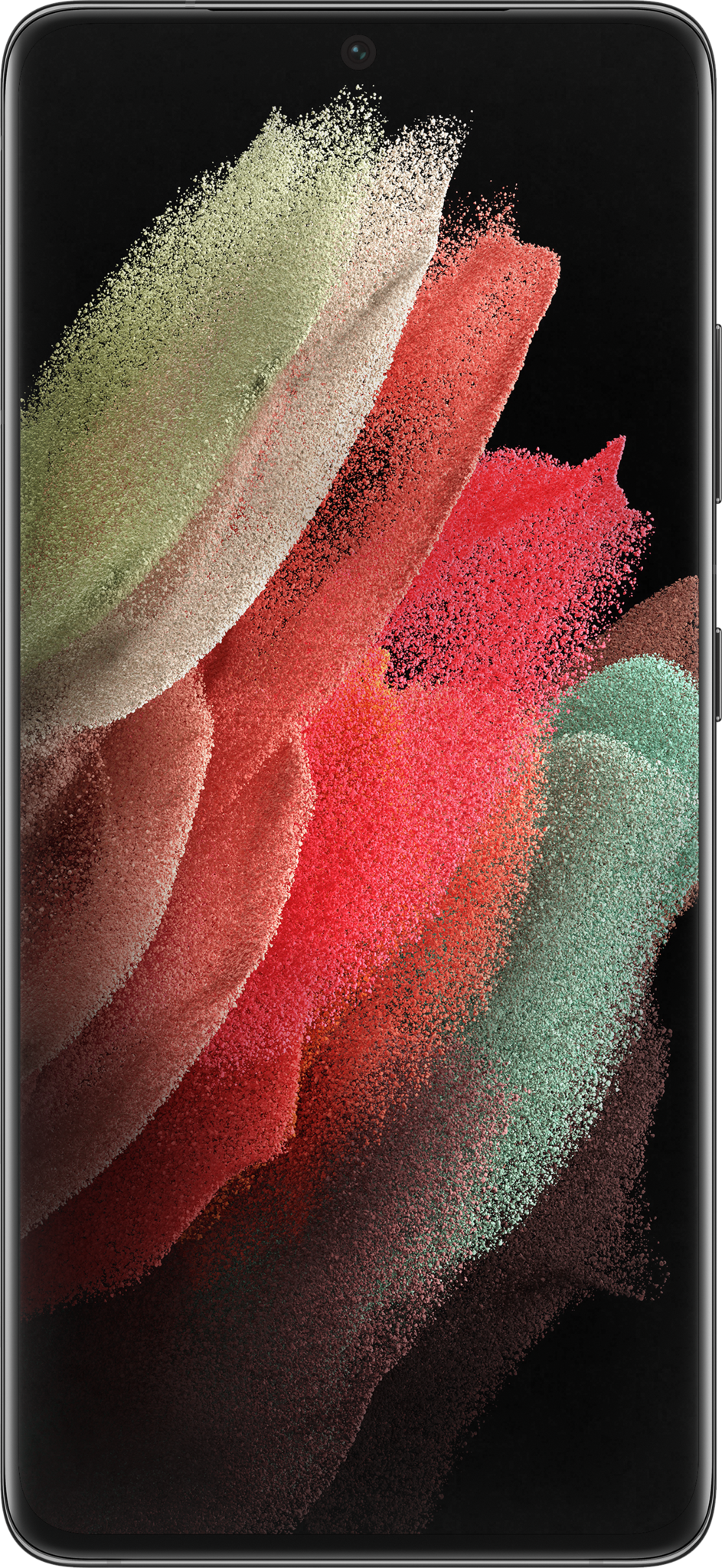
From $1,200 at Samsung From $1,200 at Amazon From $1,200 at Best Buy
Samsung's excellent all-rounder has 5G and few compromises
The S21 Ultra has a great screen, top-end specs, and feature-packed software. And you get 5G on any carrier.
Best Alternative: OnePlus 8 Pro

The OnePlus 8 Pro is impressive and well-designed as any high-end smartphone can be. If you know anything about OnePlus phones, you'll be happy to know it doesn't upend the traditional OnePlus formula. Instead, it extends it to its logical place in the world of 2021 flagships with more features and a higher price.
The hardware goes toe-to-toe with any phone out there, and it's punctuated by the best display OnePlus has ever used. It's bright, colorful, and has a 120Hz refresh rate. Inside, there are exceptional specs, and that leads to amazing performance thanks to the super-smooth OxygenOS software — it's just wonderful
The 8 Pro also brings the best cameras yet to a OnePlus phone, with a new main sensor that steps up its game to a true flagship level. The entire camera experience is a step behind the likes of the Galaxy S21 Ultra, but then again it's also less expensive. That's really where the 8 Pro fits in. It's a true flagship experience top to bottom, for just a bit less money than the traditional players with big brand names.
When you're focused on 5G, the one shortcoming here is network compatibility. The OnePlus 8 Pro doesn't support mmWave 5G at all, so you can't use it on Verizon's 5G network nor most of AT&T's network. On T-Mobile, you'll get access to a majority of its 5G network since it's built on Sub-6 technology, but even there you miss out on its up-and-coming mmWave expansion.
Pros:
- Large, beautiful 120Hz display
- Greatly improved main and wide-angle cameras
- Excellent battery life
- OxygenOS is best-in-class Android software
- Wireless charging and IP68 rating
Cons:
- Much more expensive than before
- 5G limited to T-Mobile and some of AT&T
- Telephoto camera isn't good
- Some software and camera bugs still present
Best Alternative
OnePlus 8 Pro
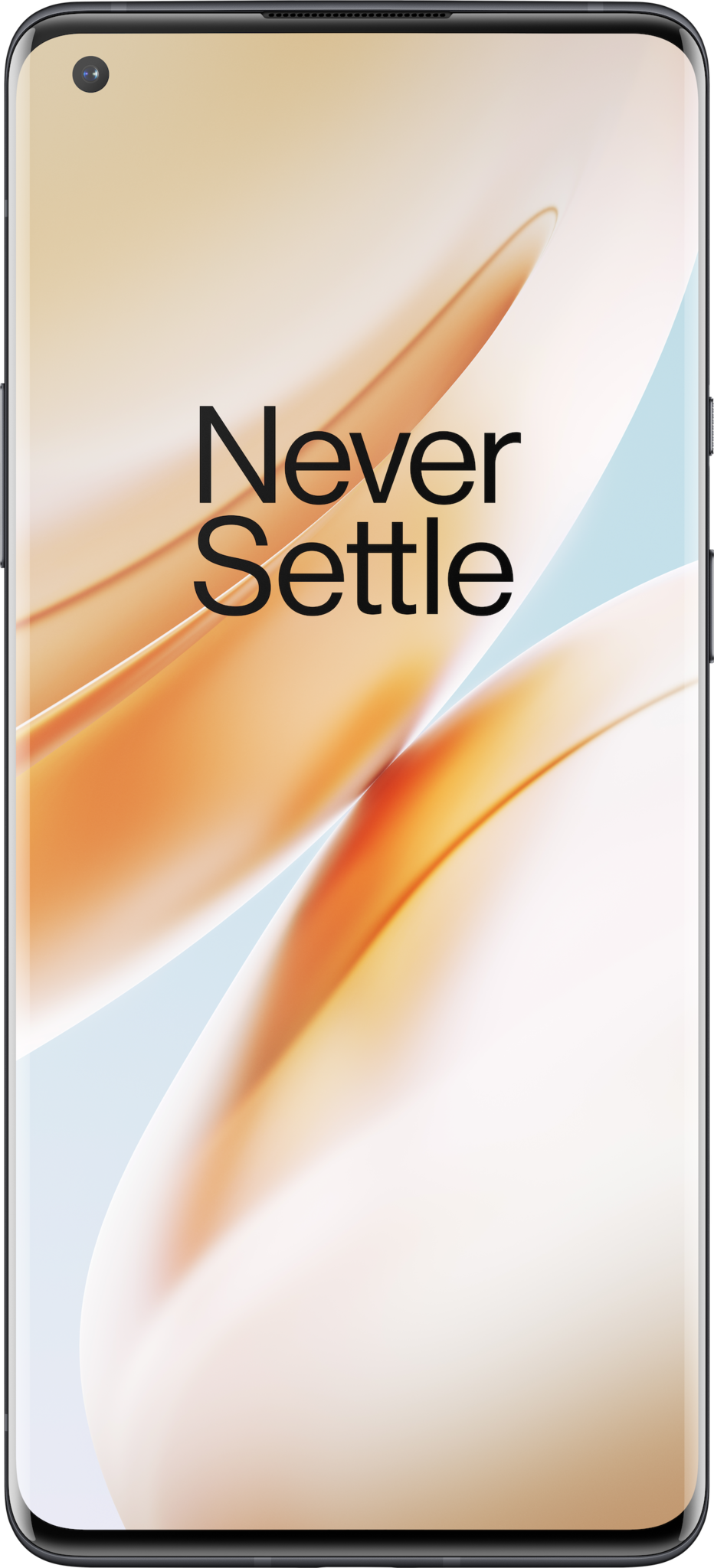
$925 at Amazon
A great overall phone, but one that comes up short in 5G compatibility
The OnePlus 8 Pro is an impressive and well-designed phone that doesn't upend the traditional OnePlus formula.
Best Value Flagship: Samsung Galaxy S20 FE
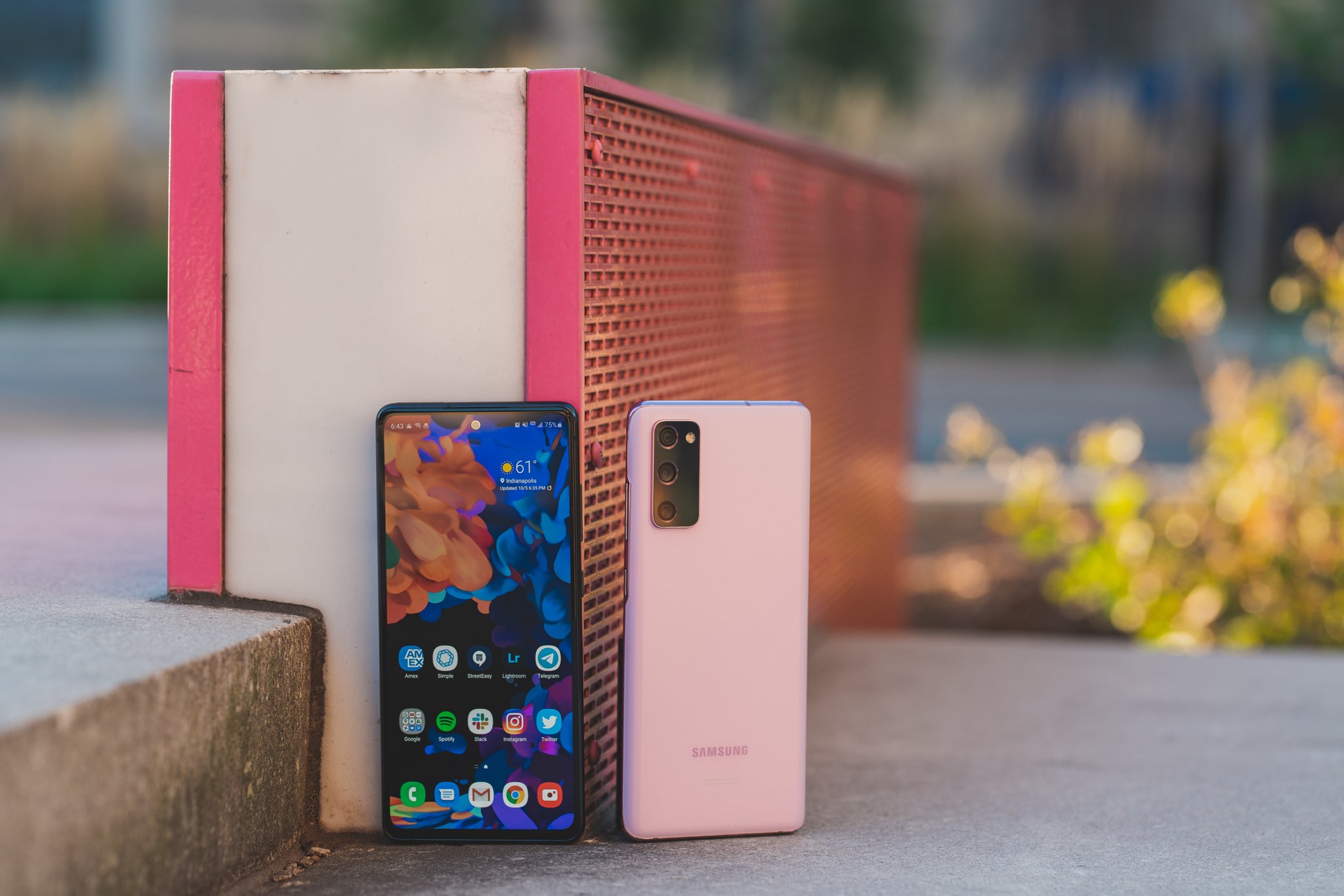
There are a lot of exciting options to choose from right now, but Samsung may have outshined all of them with the Galaxy S20 FE. Samsung offers all of the best features and specs from the Galaxy S20+ while finally providing a flat-screened device that users have been wanting for some time. In a world where curved displays look good, they struggle with palm detection, ending up with more accidental touches than anything else
Samsung also upped the ante by integrating the 120Hz refresh rate, so everything you do on the S20 FE looks smooth. Considering the price of the S20 FE, you figure that Samsung had to cut corners somewhere, and that's where the plastic material comes in. But this can help alleviate the worry of cracking the back glass panel if accidentally dropped, along with providing six fun and different colors to choose from.
As for 5G connectivity, the Galaxy S20 FE features Sub-6 GHz for most users, but those who want to use 5G on Verizon will be a bit disappointed. Since Verizon relies on Ultra-Wideband (mmWave), the standard unlocked version found on Amazon or Best Buy won't feature this. Instead, you'll have to go to Verizon directly in order to get the Samsung Galaxy S20 FE 5G UW model.
We're also still scratching our heads as to why Samsung ships a 15W charger in the box. The Galaxy S20 FE is capable of charging at speeds up to 25W, but you'll have to come out of pocket for a compatible charger. The 1080p resolution on this 6.5-inch display may not look the greatest at all times, but the 120Hz refresh rate and improved battery life will make up for it.
Pros:
- 120Hz flat display
- Six colors to choose from
- Plastic build is refreshing
- Triple camera system
- 5G connectivity for all carriers
Cons:
- Ships with a 15W charger
- 1080p display
- No headphone jack
- mmWave version only available through Verizon
Best Value Flagship
Samsung Galaxy S20 FE
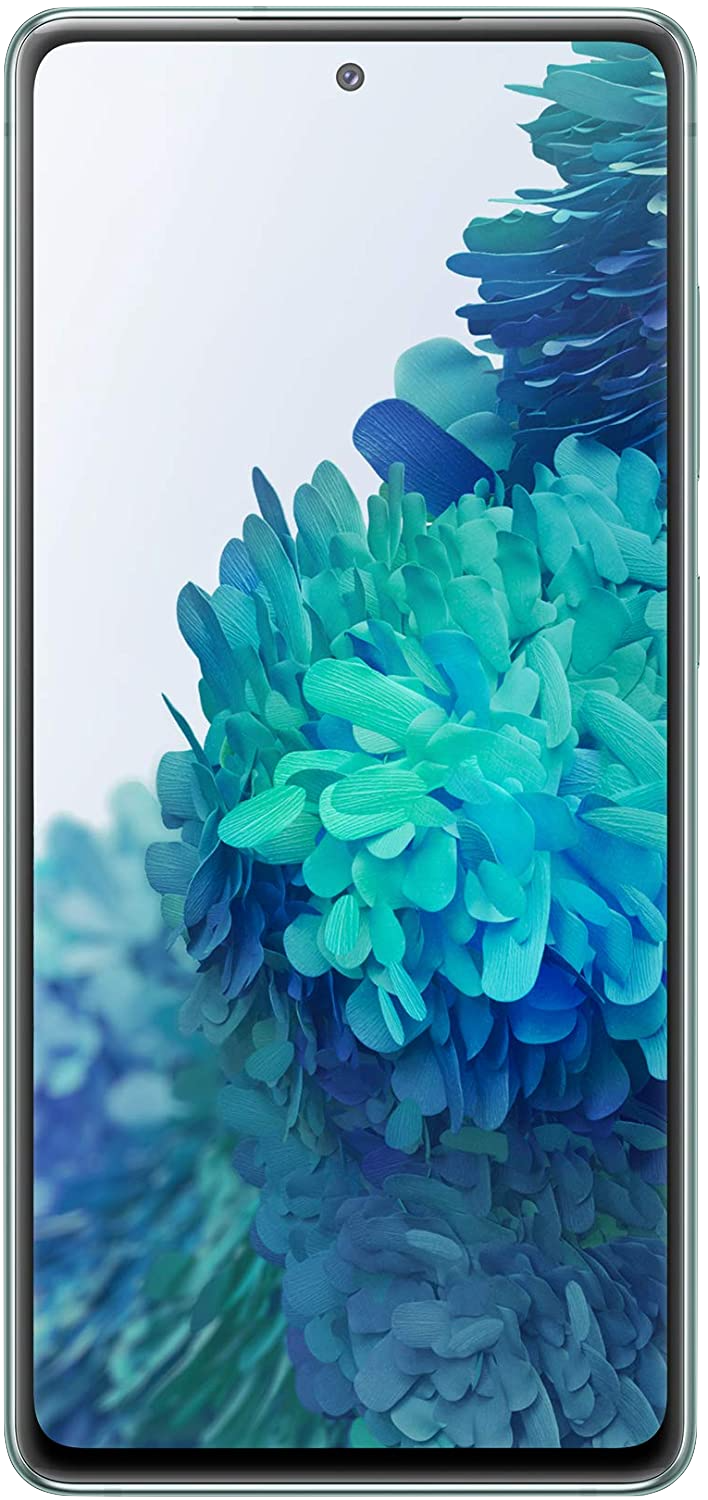
$700 at Amazon $700 at Best Buy $700 at B&H Photo
Samsung hits a home run with the Galaxy S20 FE
With many of the same specs as the Galaxy S20+, the FE is a great option for everyone who doesn't want to break the bank.
Best Cheap 5G Phone: OnePlus Nord N10 5G

With the OnePlus Nord N10 5G, OnePlus is looking to move beyond its traditional flagship killers and expand into the more affordable smartphone niche. While the N10 5G may not be a perfect device, it's a seriously great value for anyone that wants a 5G phone while spending as little as possible.
Despite being so cheap, OnePlus managed to give the N10 5G fairly impressive specs. There's a Snapdragon 690 processor paired with 6GB of RAM, allowing for solid performance for most tasks. That 690 also enables Sub-6 5G connectivity, though you won't find mmWave support here. Other specs include 128GB of expandable storage, a 4,300 mAh battery, and even a 3.5mm headphone jack.
Picture quality from the N10 5G's quad-camera system is about as average as it gets, and as far as the design is concerned, the cheap and glossy plastic won't win a design award any time soon. That's about it as far as cons go, and considering the Nord N10 5G's $300 asking price, that's mighty impressive.
Pros:
- 90Hz refresh rate is buttery smooth
- Very good performance
- Reliable 4,300 mAh battery
- Has a headphone jack
- Excellent price
Cons:
- Mediocre cameras
- Cheap plastic design
Best Cheap 5G Phone
OnePlus Nord N10 5G
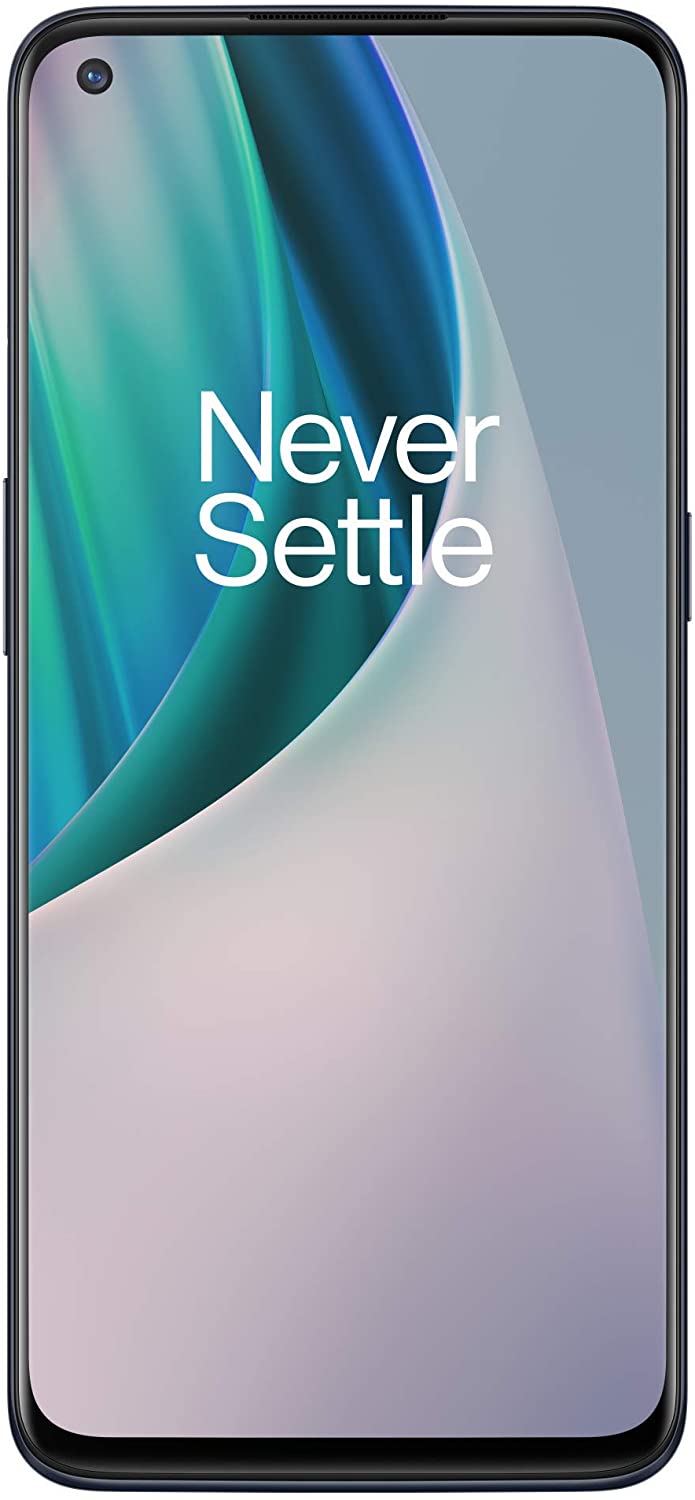
5G doesn't have to be expensive
Eager to get 5G but have a limited budget? The OnePlus Nord N10 5G is exactly what you've been looking for
Best Mid-Range 5G Phone: Google Pixel 4a 5G
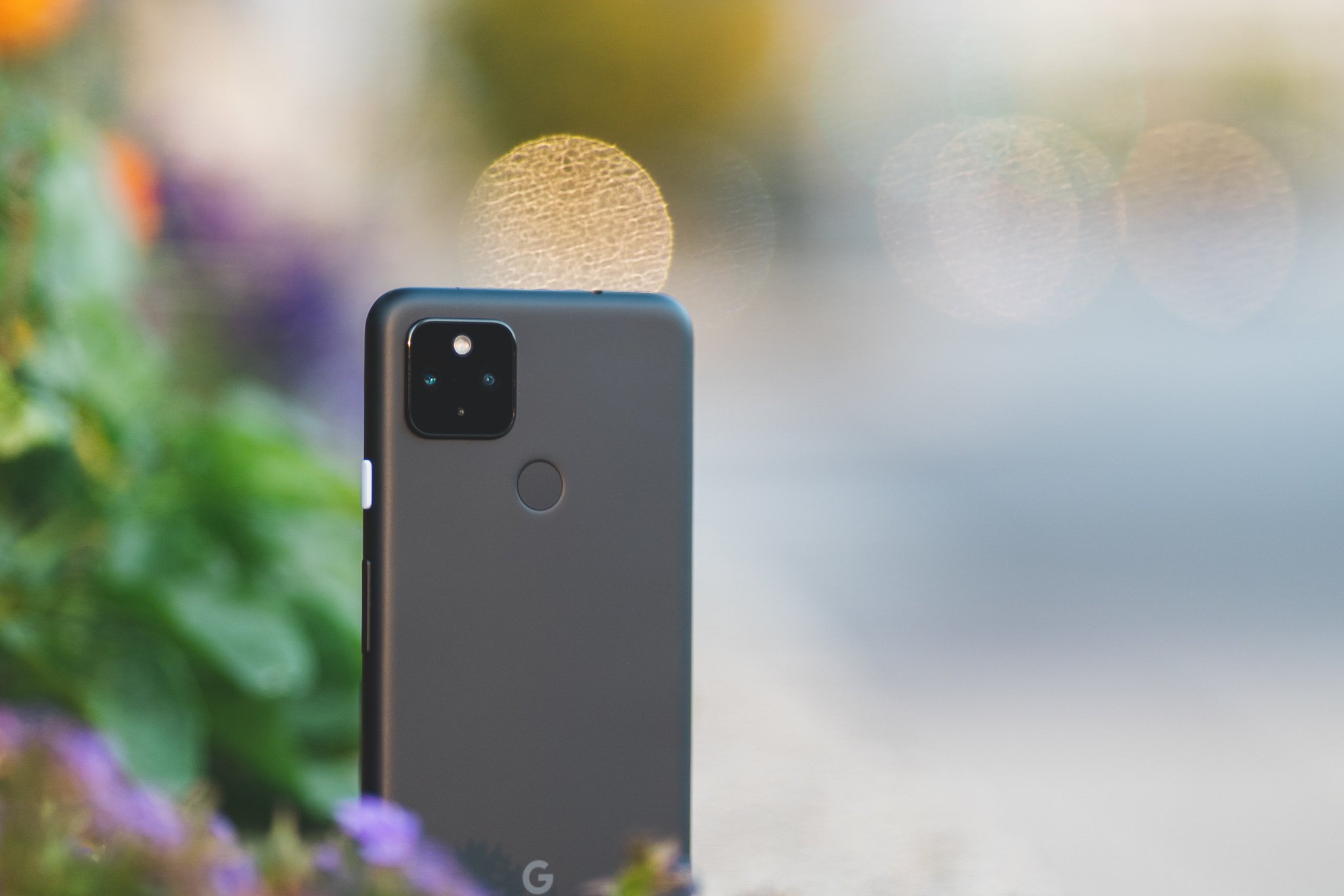
If you like what you see with the OnePlus Nord N10 5G but have a bit more cash to spend, it might be worth considering the Pixel 4a 5G. This is one of the most overlooked smartphones from 2020, but as far as affordable 5G phones are concerned, it's one of the best options.
Powering the Pixel 4a 5G is the Qualcomm Snapdragon 765G, and in our testing, it's resulted in truly excellent performance. It may not be on the same technical level as something like the 865+ or 888, but for the vast majority of people, it's more than fast enough for virtually any task. You're also getting 6GB of RAM, 128GB of storage, and a 3,885 mAh battery that allows for surprisingly long endurance.
A big draw to the Pixel 4a 5G is its camera system, which is the exact same setup you'll find on the more expensive Pixel 5. The 12.2MP primary camera and 16MP ultra-wide camera may not sound all that impressive on paper, but in actual use, this is a phone that churns out stunning photos every single time you press the shutter button.
As for the 5G situation, it's a bit clunky. The unlocked variant of the Pixel 4a 5G is limited to Sub-6 speeds, but if you're a Verizon customer, you can get the Pixel 4a 5G UW with Sub-6 and mmWave connectivity.
Pros:
- Amazing cameras
- Snapdragon 765G is fast and reliable
- AMOLED display looks great
- Excellent battery life
- Three years of timely updates
Cons:
- No water resistance or wireless charging
- Display is only 60Hz
Best Mid-Range 5G Phone
Google Pixel 4a 5G
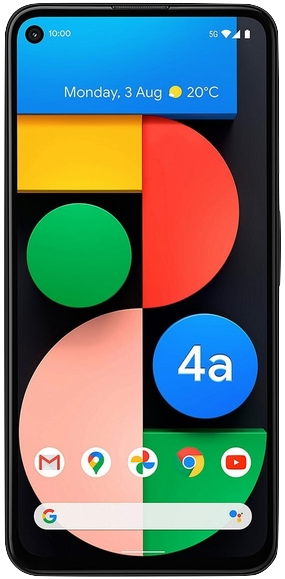
$459 at Amazon $460 at Best Buy $459 at B&H
A cheaper alternative to the flagship 5G handsets
The Pixel 4a 5G hits all the marks one could want in a budget phone that's compatible with 5G networks.
Best Small 5G Phone: Samsung Galaxy S21
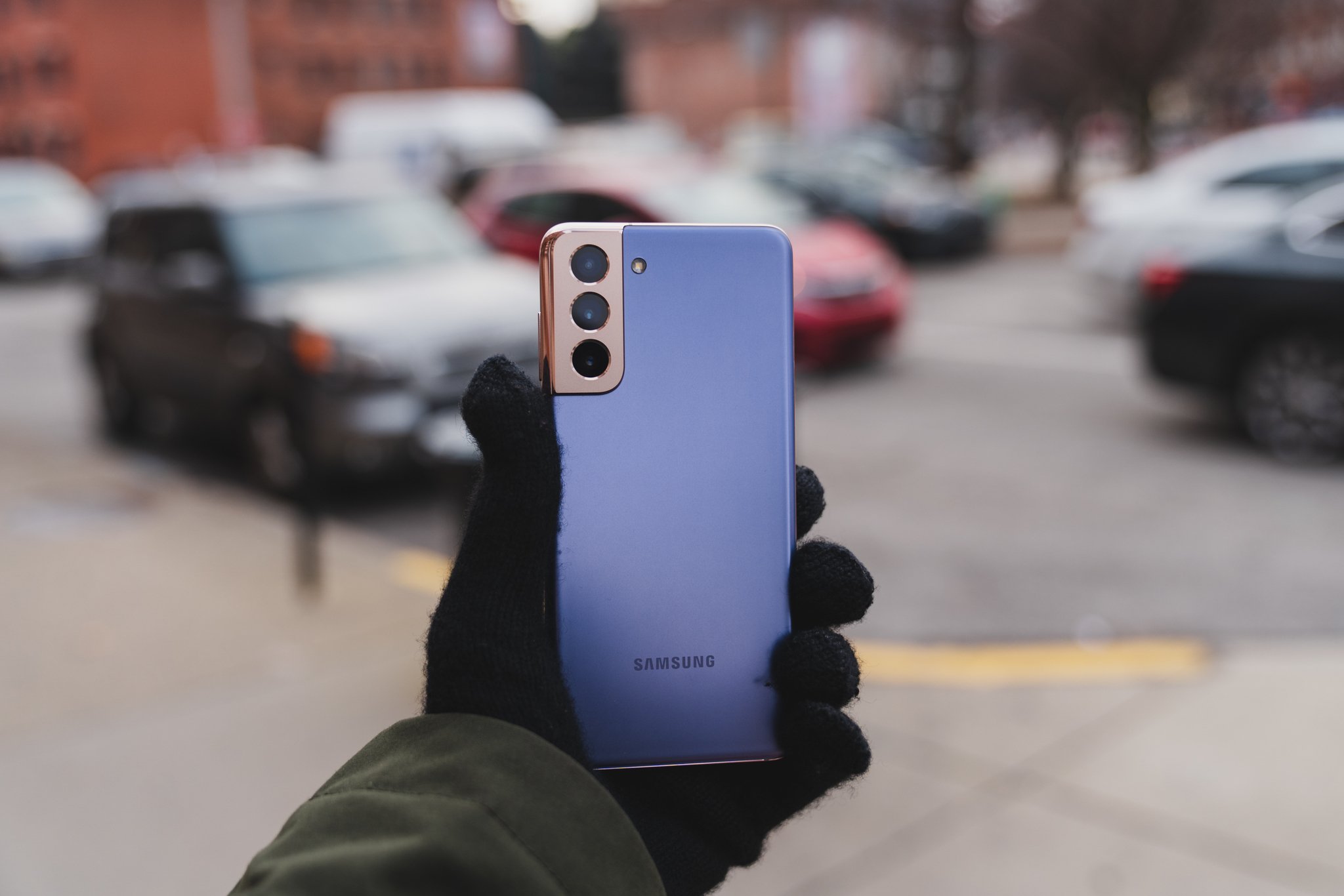
The Galaxy S21 Ultra is an incredible Android phone no matter how you slice it, but for some shoppers, it may be too much — whether it be the steep price tag or its gigantic size. Thankfully, we have the regular Galaxy S21 as a cheaper and smaller alternative.
While we don't consider the Galaxy S21 to be the absolute smallest phone you can buy these days, it is refreshingly compact compared to many of its competitors. The 6.2-inch AMOLED display gives you a sizeable canvas for everything you want to do, and thanks to extremely small bezels and a lightweight plastic design, the S21 ends up being quite comfortable in day-to-day use.
At the heart of the S21 is the exact same Snapdragon 888 processor, and in addition to top-notch performance, you also get support for Sub-6 and mmWave 5G. You also get 8GB of RAM, 128GB of storage, and a 4,000 mAh battery that allows for good (but not great) battery life.
You could argue that the Galaxy S20 FE still offers the best bang-for-your-buck (especially when it's on sale), but for shoppers that prefer a smaller phone and want the added speed + 5G support of the Snapdragon 888, the Galaxy S21 is a compelling purchase.
Pros:
- New design looks great
- 120Hz display is gorgeous
- Same processor as the S21 Ultra
- Very good cameras
- Sub-6 and mmWave 5G
Cons:
Best Small 5G Phone
Samsung Galaxy S21
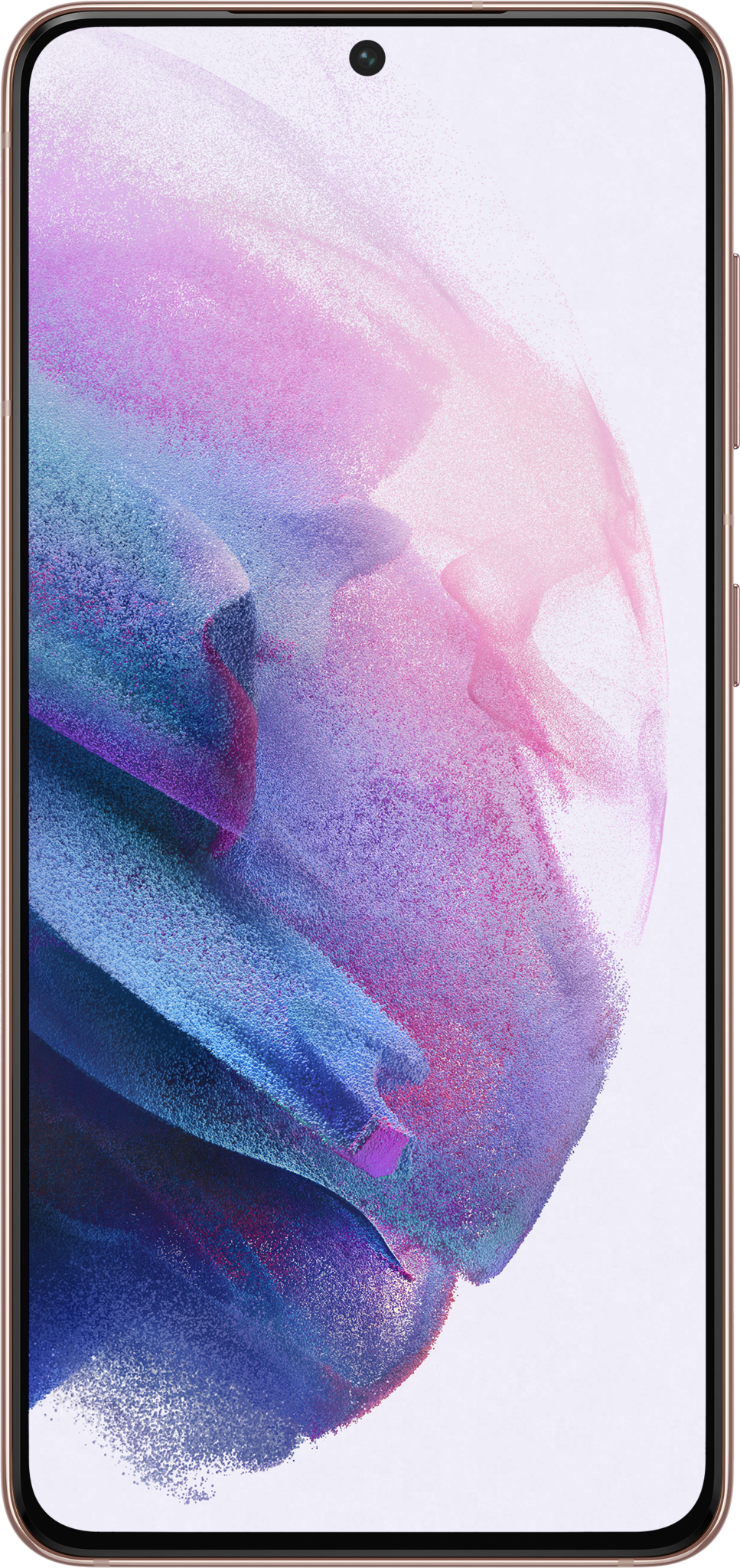
From $800 at Samsung From $800 at Amazon From $800 at Best Buy
Smaller is better
While it may not be the smallest phone out there, the regular S21 delivers a flagship experience in a compact body.
Best for Dual Screens: LG Velvet
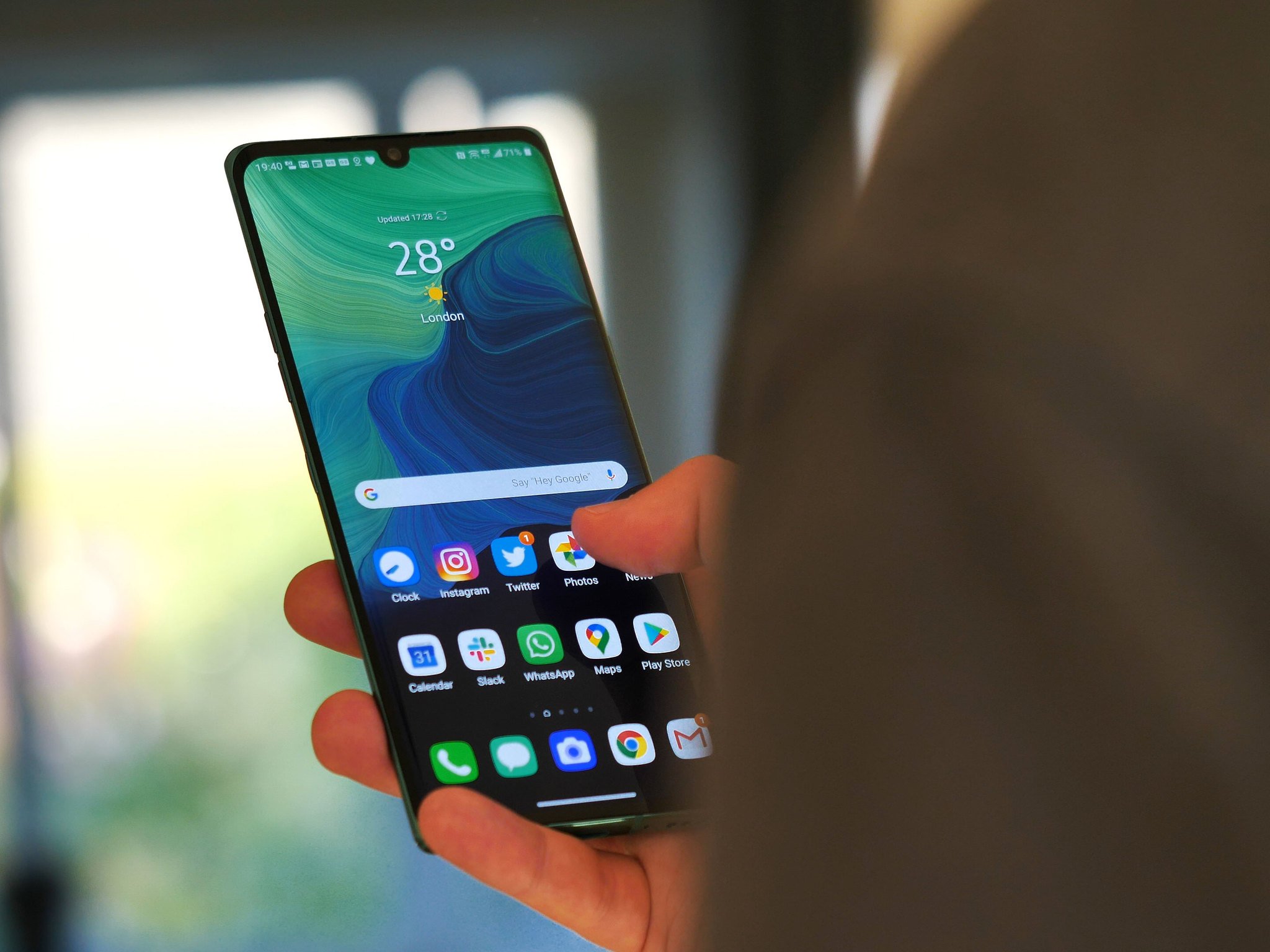
If you're not into the whole "foldable" scene, or don't want to choose between buying a used car or a smartphone, the LG Velvet is a great compromise. It seems LG is done chasing Samsung for being the best Android phone and is taking a different approach to the market. Enter detachable screens.
The Velvet itself is a move away from the traditional design that we've seen LG attempt in years past. With the Velvet, you'll find an extremely ergonomic design with curves in all of the right places, along with a water-drop layout for the rear cameras. Those wanting to slap on a secondary display can get the feeling of a book, although you'll have to spend a few extra bucks to get one. Nonetheless, this combination makes for a great mid-to-upper range option.
If you're looking at the Velvet solely for camera performance, you'll come away disappointed. It's not that the Velvet is bad, but LG's post-processing software adds on too much sharpening and almost makes your pictures look fake altogether.
On the 5G front, you'll find that there are actually three different versions of the Velvet. The Verizon edition is $100 more and features mmWave for 5G connectivity, while the AT&T and T-Mobile versions support the more-traditional sub-6GHz network compatibility. But the twist here is that while the Verizon and AT&T versions sport Qualcomm's Snapdragon 765G, the T-Mobile variant alone sports the MediaTek Dimensity 1000C chipset. There should not be much of a performance difference, but it's rather questionable to see this change, causing some potential confusion.
Pros:
- Gorgeous design
- Dual Screen add-on available
- All-day battery life
- Includes 3.5mm headphone jack
Cons:
- No face unlock option
- Camera performance could be better
- Three different versions are available
Best for Dual Screens
LG Velvet

$700 at Verizon $600 at AT&T
If you want two screens without the fold, the Velvet is great
The LG Velvet provides a gorgeous design, middling specs, but also comes in several different versions in the same body.
Best Foldable 5G Phone: Samsung Galaxy Z Fold 2
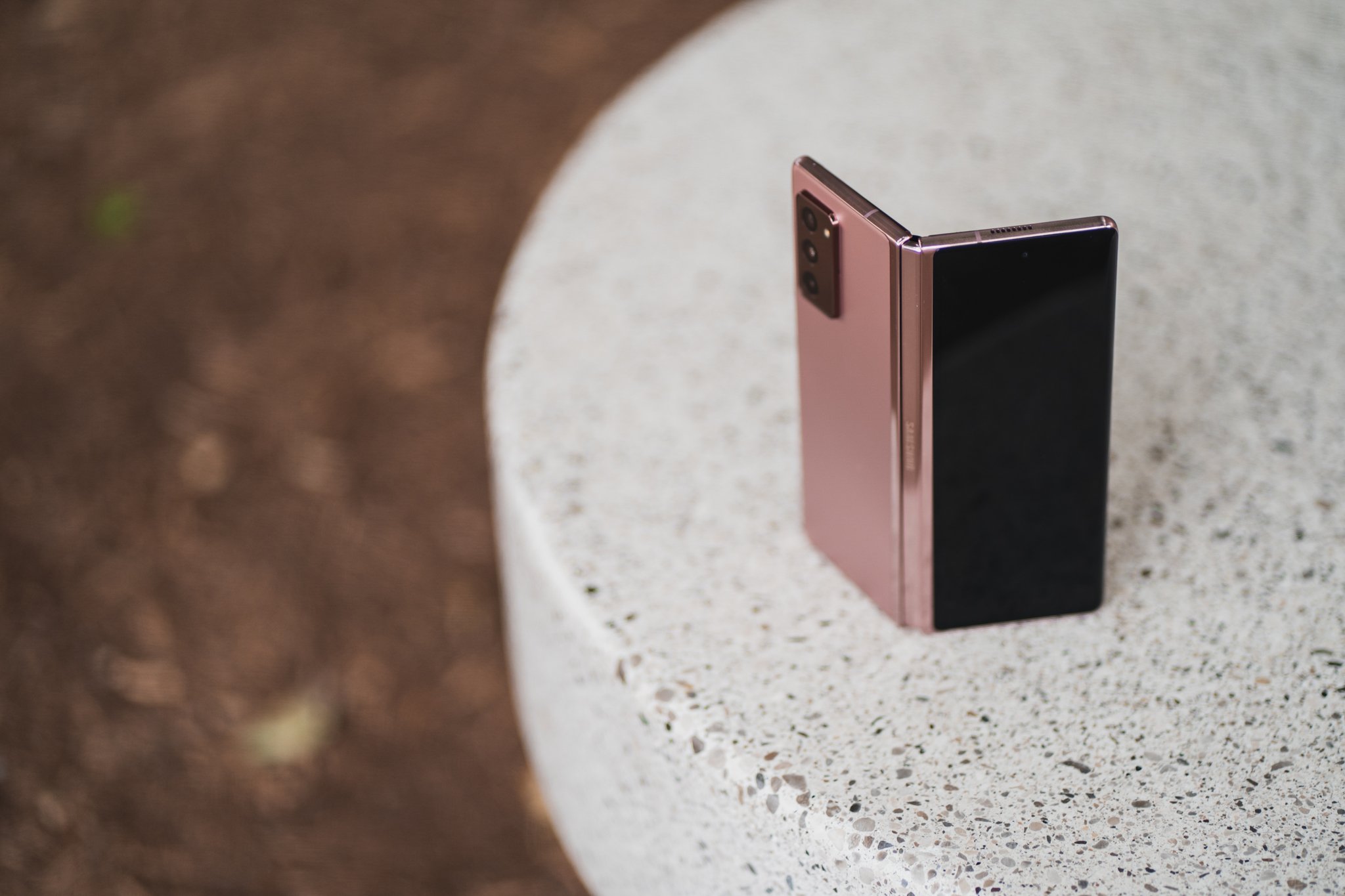
Where does one begin when it comes to talking about the Galaxy Z Fold 2? It's almost as if the original Galaxy Fold is from a different device lineup altogether, as the Galaxy Z Fold 2 is incredible from every perspective. The Cover Screen fills up almost every inch of the front, and unfolding it provides you with a 7.2-inch tablet that is much more useful than you may think.
The camera system may not be exactly on par with the Galaxy S21 Ultra, but it is still better than a lot of other smartphones. While Google is still trying to figure out how to handle foldable devices, Samsung has tweaked its software just enough to make sure that you can take full advantage of those apps. From including the Snapdragon 865+ paired with 12GB of RAM and 256GB of onboard storage, along with all-day battery AND 5G connectivity, this is the Ferrari of smartphones.
Even with its exorbitant price tag, Samsung still opted to cut a few corners with the Z Fold 2. Notably, there is no official IP rating for water or dust resistance. Your phone will be able to handle a bit of rain, but that's about it and you'll want to wipe it down as soon as you can. While the Z Fold 2 sports 256GB of onboard storage, that may not be enough for some but that's just "too bad" as you won't be able to use one of the best microSD cards with this bad boy.
Pros:
- Incredible hardware design
- The best specs in a smartphone
- Triple camera setup
- Software has been tweaked to accommodate foldable display
Cons:
- Expensive
- No IP water resistance certification
- No microSD card slot
Best Foldable 5G Phone
Samsung Galaxy Z Fold 2
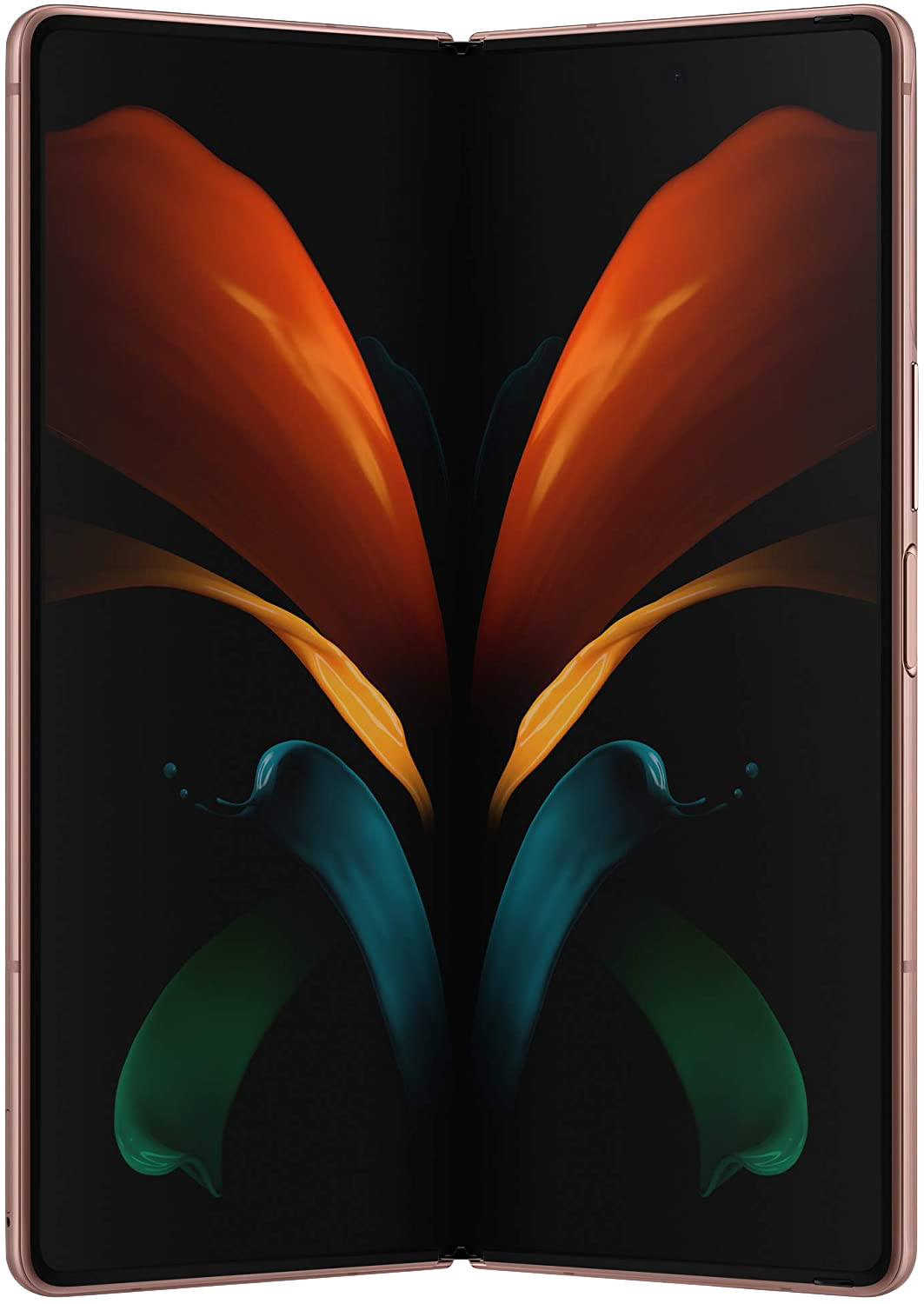
The best 5G phone for those who want to live in the future
Samsung's Galaxy Z Fold 2 makes you feel like you are living in the future with incredible specs and an even better design.
Best for Verizon: Motorola Edge+
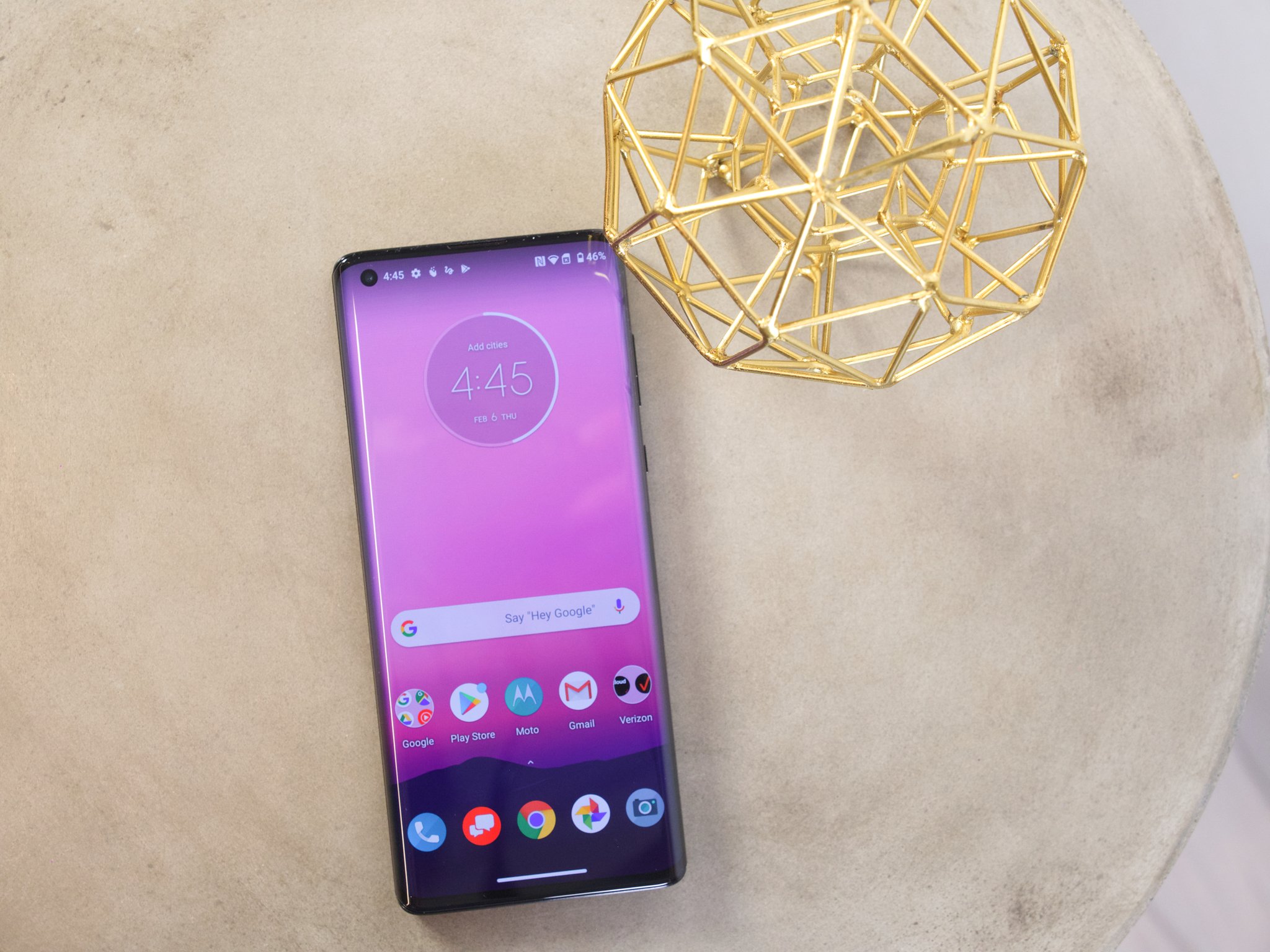
Motorola has had its fair share of ups and downs over the years when it comes to providing one of the best Android phones. With the Motorola Edge+, the company was hoping to get back on the map with a complete re-design thanks to the waterfall display accompanied by a 90Hz refresh rate.
This redesign provides a more narrow body, making it easier to use with one hand. One-handed usage is something that many smartphone makers have seemingly come to ignore as phones continue to get more wide. Nonetheless, Motorola paired the new design with flagship specs courtesy of the Snapdragon 865 chipset, along with 12GB of RAM, 256GB of storage, and an enormous 5,000mAh battery.
Surprisingly, Motorola made the conscious decision to omit any official dust or water resistance IP rating. You'll likely be just fine for a splash in the rain, but that's about it. The camera system is also just OK, and not what you would likely expect to see from a flagship-level device in 2021. Instead, it matches up more with some of the mid-tier smartphones that we've seen released over the last year or so.
Finally, there was one more puzzling "issue" with the Moto Edge+ that has some scratching their heads. While this handset supports both Sub-6 and mmWave, the only official carrier support comes from Verizon. Even if you try to purchase the phone directly from Motorola, you are only limited to selecting Verizon as there are no "unlocked" variants available.
Pros:
- Beautiful display with 90Hz refresh rate
- Narrow body for easy one-hand use
- Excellent battery life
Cons:
- Lack of water resistance
- Camera is just okay
- Only available through Verizon
Best for Verizon
Motorola Edge+
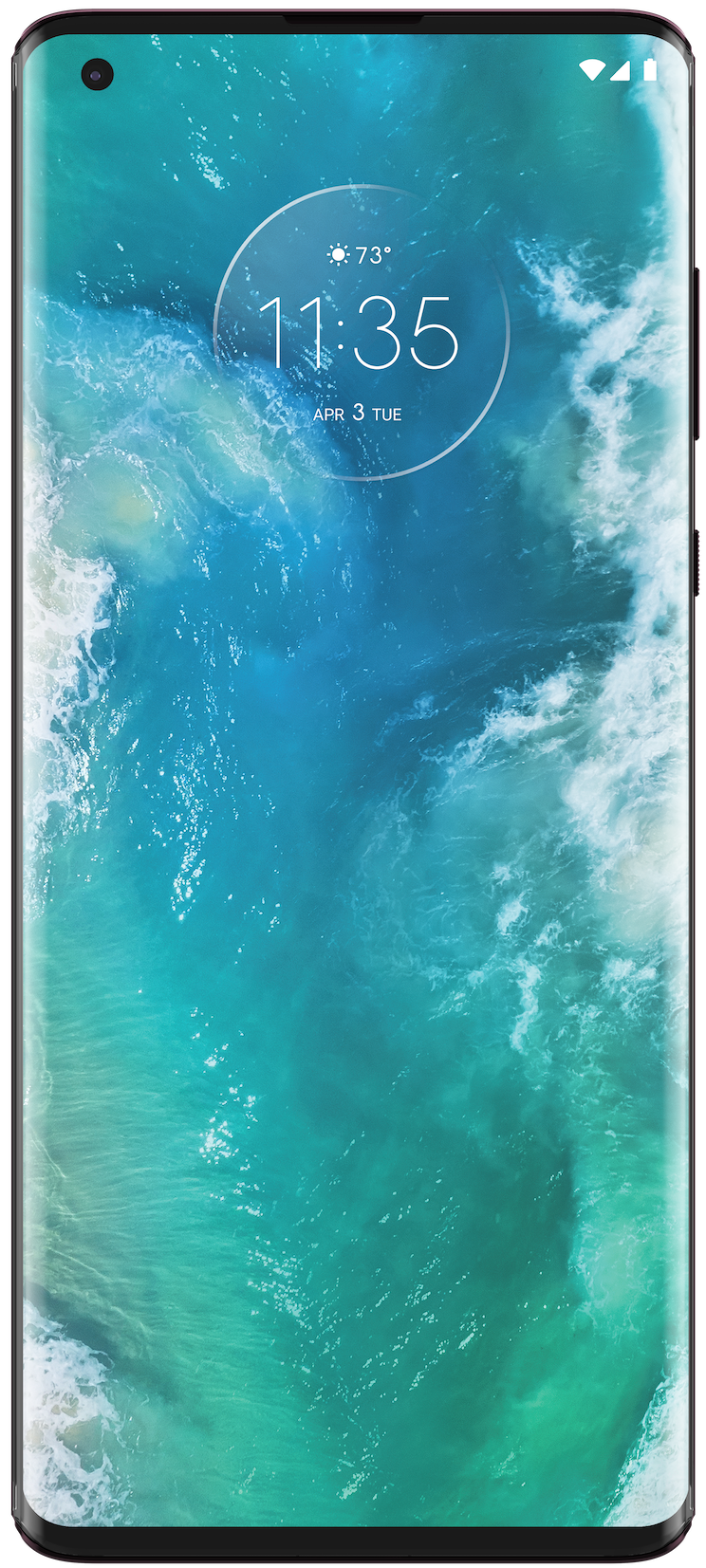
Great for only Verizon users
The Motorola Edge+ features both 5G spectrums, while also sporting flagship specs and a gorgeous design.
Best for Pixel Fans: Google Pixel 5
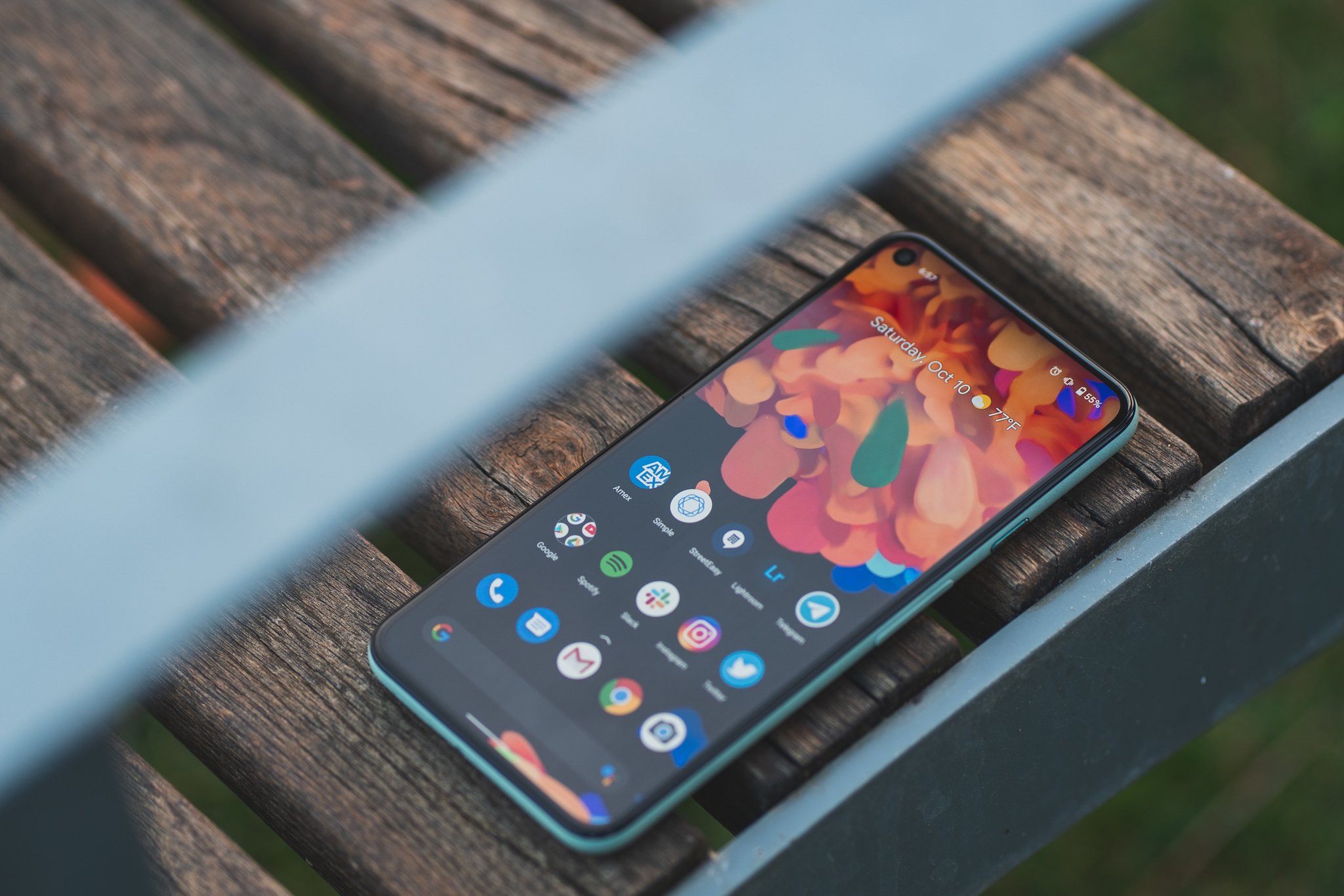
2020 was a weird year for Google after getting lambasted in regards to the shoddy battery life from the Pixel 4. The only saving grace for 4 and 4 XL was the absolutely amazing camera system, making it possible to point your smartphone at the night's sky and get pictures of the constellations. Fast forward to today, and Google has redeemed itself with the Google Pixel 5.
This handset features all of the specs one would expect from a smartphone priced at less than $1,000. The Snapdragon 765G provides great performance while unlocking 5G connectivity. Google's decision to use an aluminum unibody design while still making wireless charging is fantastic, and the Pixel 5 features an ultra-wide secondary camera instead of the telephoto lens found on the Pixel 4 and 4 XL.
Getting a Pixel guarantees you three years of platform updates, along with getting the latest version of Android as soon as it's become available. But with the Pixel 5, Google learned from the past and packed in a larger battery with its latest devices to go along with the 90Hz display for buttery smooth scrolling and gaming.
There's also the fact that the Pixel 5 is just a joy to use. It's considerably smaller than most other flagships, Google's custom take on Android is filled with useful features, and the $700 asking price makes it a lot more affordable than something like the S21 Ultra.
Pros:
- Aluminum unibody
- Qi wireless charging
- 90Hz refresh rate
- Same great camera from Pixel 4
- 3 years of software updates
Cons:
- Does not feature Qualcomm's latest processor
- Limited global availability
Best for Pixel Fans
Google Pixel 5

Get 5G connectivity from Google
Google's 2020 flagship may be surprising to some, but it's an impressive handset with Google's software and camera prowess.
The best 5G phones aren't just for enthusiasts anymore
5G coverage is growing, but it isn't yet to the point where we can unequivocally say that you have to get a 5G phone. At the same time, most phones launching these days now have 5G as a staple feature. Whether you can take advantage of 5G speeds today or need to wait a little longer, ensuring it's in your next smartphone is a good way to ensure you're prepared for the latest generation of wireless connectivity.
For those who want to get to the best network speeds, the Galaxy S21 Ultra is a clear winner — because it's just a great overall phone that happens to have 5G connectivity. You don't choose the Galaxy S21 Ultra because it has 5G, but because of its great hardware, display, specs and cameras. Having 5G for now — and more importantly for a year from now — is just a great side-benefit.
Credits — The team that worked on this guide

Andrew Myrick is a regular freelancer at Android Central. He has been a tech enthusiast ever since the original iPhone was released and continues to flip-flop between devices. You might as well hook him up to an IV filled with coffee to get him through the day. If you have any questions, you can find him on Twitter, and he'll get back to you.

Joe Maring is Android Central's Senior Editor and has had a love for anything with a screen and CPU since he can remember. He's been talking/writing about Android in one form or another since 2012 and often does so while camping out at the nearest coffee shop. Have a tip for the site? Reach out on Twitter @JoeMaring1 or send an email to joe.maring@futurenet.com!

Samuel Contreras is a writer covering networking and 5G at Mobile Nations. He spends most of his time researching computer components and obsessing over what CPU goes into the ultimate Windows 98 computer. It's the Pentium 3.
